Terrorism and Violent Extremism Awareness Guide
The Terrorism and Violent Extremism Awareness Guide raises awareness about terrorism and the issue of radicalization to violence. It is intended for first responders, parents, colleagues or friends of persons at-risk.
The guide helps readers better understand this concept, including:
- the role of the Internet and propaganda,
- indicators or early warnings of radicalization that may lead to violence, and,
- signs of terrorist-planning activities.
The guide contains many resources as well as information on how to ask for help when confronted by these behaviours.
Credits
Title: Terrorism and Violent Extremism Awareness Guide
Produced and revised by: National Security Awareness Program, Communications Office and Translation Services of the RCMP/C Division (Quebec). In collaboration with the Counter Terrorism and National Security Committee of the Canadian Association of Chiefs of Police and the Police Counter-Terrorism Management Structure in Quebec.
© Her Majesty the Queen in Right of Canada as represented by the Royal Canadian Mounted Police (2016). All rights reserved. This material may not be reproduced in whole or in part in any form or by any means without the authorization of the Royal Canadian Mounted Police.
We are aware that some of the images contained in the Terrorism and Violent Extremism Awareness Guide are protected by copyright. The Royal Canadian Mounted Police has negotiated the conditions for their use with a number of international news agencies. These images are used only for prevention and education purposes and may not be reproduced by a third party under any circumstances.
This guide contains textual information collected from a variety of open sources. This information was validated by Canadian academics and subject-matter specialists.
PS64-129/2016E-EPUB
978-0-660-03505-5
CACP word

The Canadian Association of Chiefs of Police Counter Terrorism & National Security (CACP-CTNS) committee fully supports the Terrorism and Violent Extremism Awareness Guide and encourages its sharing among law enforcement and partner agencies.
The Guide provides information on indicators and early warning signs of radicalization to violence, as well as information on how individuals can ask for assistance when confronted by behaviours associated to radicalization to violence. The Guide promotes the importance of education, awareness and dialogue for communities and front-line officers in efforts to disengage and prevent radicalization to violence.
The CACP-CTNS committee hopes that the Terrorism and Violent Extremism Awareness Guide will assist law enforcement personnel and prevention practitioners to better understand the phenomenon of radicalization to violence and how community-based prevention and protection initiatives are necessary. We also hope it will enhance awareness and knowledge about terrorism and extremism in Canada.
---- June 2016 ----
Preface - RCMP Commissioner, Bob Paulson
We live in a country where freedom of speech, freedom of thought and the right to security are regarded as a valuable heritage that must be passed on to the next generations. These freedoms are a fundamental right that our builders have shaped and developed for all Canadians. As a police organization, our role is to protect this right for the future.
The emergence of social media and our global communications environment remind us more than ever of the importance of being vigilant and aware of our surroundings. The virtual removal of geographical boundaries has facilitated the spread of radicalization to violence. What happens thousands of kilometres away is now much closer to us than it seems.
Some people are influenced by the propaganda in the social media and resolve to travel abroad to take part in terrorist activity. This issue, just like that of lone actors and extremists within our boundaries, is of great concern to all law enforcement agencies across the country. Although we could fight endlessly against this threat using a law-enforcement approach, the long-term solution to mitigate unforeseeable threats lies in prevention and citizen engagement.
Better understanding for better prevention
We live in a country where freedom of speech and freedom of thought are regarded as a valuable heritage that must be passed on to the next generations.

Terrorism is an intricate question that represents the main threat to national security in Canada. It is essential for everyone to better understand and recognize this phenomenon. In this spirit, the Royal Canadian Mounted Police has developed, through its National Security Awareness Program, the Terrorism and Violent Extremism Awareness Guide. This electronic book divided into sections is designed to help increase awareness and understanding of the various issues related to terrorism and violent extremism in Canada.
This document is intended as a reference guide to this still emerging phenomenon in Canada. It contains a wealth of useful information from various sources to help you better understand radicalization leading to violence.
Whether as a first responder or as a parent, colleague or friend of a person at risk, we all have a role to play in preventing radicalization to violence, in protecting our communities and in encouraging community-based prevention and protection initiatives.
Support and cooperation from the families of persons at risk is also invaluable, as relatives are often our only contact with them.
Thanks to targeted support and prevention programs, we shall build together communities that are resistant to radicalization to violence.

Bob Paulson
Commissioner - Royal Canadian Mounted Police
Radicalization to violence

"Martin was like any other boy: he liked having fun, he loved life. Constantly on the Internet, he was unfortunately manipulated and influenced at a time when he was vulnerable. His behaviour changed completely and he started seeing conspiracies everywhere. I tried to find help for him, but he was too deeply radicalized. He did the unspeakable in the fall of 2014. How I wish he was still with us and that none of this had ever happened."
This section deals with radicalization to violence. It addresses a number of related concepts, the role of the Internet and propaganda, and proposes actions to deal with this issue.
Definitions
Radicalization is the process by which individuals are introduced to an overtly ideological message and belief system that encourages movement from moderate, mainstream beliefs toward extreme views.
Radical thinking is not a crime in itself. Sympathizing with radical thinking does not necessarily lead to violence or terrorist action. However, radical thinking becomes a threat to national security when it leads an individual to espouse or engage in violence as a means of achieving political, ideological or religious goals.
Radicalization to violence is not a new phenomenon and is not limited to a single group, social class, religion, culture, ethnicity, age group or worldview. Vulnerable individuals searching for guidance and seeking a sense of belonging are more at risk of radicalization regardless of their background and level of education. There is not one single profile.
References
- Smith, Angus. Radicalization – A Guide for the Perplexed, Royal Canadian Mounted Police, 2009.
- International Association of Chiefs of Police. Radicalization 101, Committee on Terrorism, 2012.
Models explaining radicalization
The issue of radicalization to violence is complex and there is not one single typical profile of a terrorist. Therefore, there is no simple explanation or consensus about a typical pathway to radicalization leading to violence. However, researchers and security services worldwide propose various models to better define specific trajectories.
The following are two of these models:
- 1. Model focusing solely on the individual and proposing a step-by-step process, in the form of a staircase
- 2. Model referring to a feeling of injustice
References to more models
- Crettiez, Xavier. The Radicalization Process: From Conversion to Jihad, Federal Bureau of Investigation, 2006.
- Crettiez, Xavier. High Risk Activism: Essay on the Process of Violent Radicalization (Part One), No. 34, Pôle Sud, 2011.
- Crettiez, Xavier. High Risk Activism: Essay on the Process of Violent Radicalization (Part Two), No. 35, Pôle Sud, 2011.
1. This model focuses solely on the individual and proposes a step-by-step process, in the form of a staircase
On the first floor, candidates for radicalization perceive injustices in their everyday life and think they can fight or correct them. If they feel they have less and less non-violent options to achieve greater justice, they are likely to keep climbing. When this happens, they reach the second floor and displace their aggression onto out-groups. On the third floor, they gradually engage with the morality of the use of violence toward those they identify as the enemy. On the fourth floor, individuals join an organization they associate with and become indoctrinated. Finally, it is when they reach the fifth and top floor that the radicalization process culminates and subjects mobilize and engage in terrorism and violent extremism.
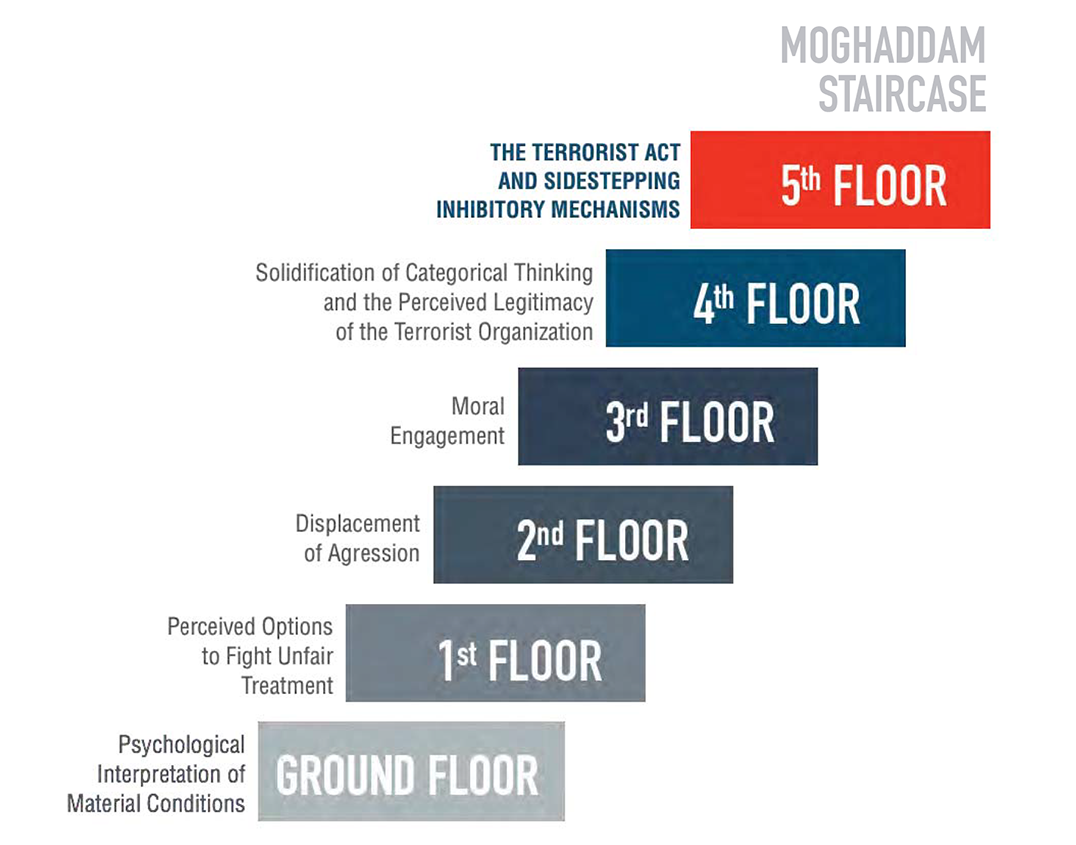
-
Image description
Moghaddam Staircase Model: Ground floor = Psychological Interpretation of Material Conditions / 1st floor = Perceived Options to fight Unfair Treatment / 2nd floor = Displacement of Agression / 3rd floor = Moral Engagement / 4th floor = Solidification of Categorical Thinking and the Perceived Legitimacy of the Terrorist Organization / 5th floor = the Terrorist Act and Sidestepping Inhibitory Mechanisms
- Example - Level 0: The individual feels that he is being fairly treated by society.
- Example - Level 1: The individual loses his job and makes it a personal issue. He feels that he is being unfairly treated and is unable to resolve the situation through legal solutions/steps.
- Example - Level 2: The individual is still unemployed and begins to identify with far-right rhetoric. He blames/criticizes immigrants for his problem, but will not engage in physical aggression at this stage.
- Example - Level 3: Still unemployed, the individual determines that using violence as an option is morally justified.
- Example - Level 4: The unemployed individual joins a rightwing extremist group that promotes an anti-immigration ideology ("Us against Them" rhetoric).
- Example - Level 5: The unemployed individual engages in violent criminal acts against government institutions or targeted persons.
Reference
- Moghaddam, Fathali M. The Staircase to Terrorism, A Psychological Exploration, Vol. 60, No. 2, American Psychologist, 2005.
2. The second model also refers to a feeling of injustice
The individual may have a feeling of moral outrage; however, contrary to the first model, the second model considers that the personal process is not focused only on the individual. It takes into account relationships which are considered essential. In fact, the receptivity of an individual to the process of radicalization to violence develops solely through acquaintances, friends and various social networks.

-
Image description
The radicalization process according to Marc Sageman is represented as follows: Three intertwined circles (specific interpretation of the world, feeling of moral outrage and resonance with personal experiences) forming a whole (the individual) and surrounded by the individual's relationships (entourage, friends, family, encounters and social networks).
Reference
- Sageman, Marc. Radicalization of Global Islamist Terrorists, United States Senate Committee on Homeland Security and Governmental Affairs, 2007.
A remarkable diversity
Actual cases of extreme radicalization in Canada and elsewhere in the world
Samantha Louise Lewthwaite

Name: Samantha Louise Lewthwaite
Other name: White Widow
Nationality: British
Affiliation: Al Shabaab
Alleged crime: Widow of one of the suicide bombers responsible for the attack in London in July 2005. She is accused by the Kenyan authorities of having orchestrated and carried out the attack against the Westgate Mall in Nairobi between September 21 and 24, 2013, killing 68 people. She is currently wanted under an international arrest warrant.
Anders Breivik

Name: Anders Breivik
Other name: None
Nationality: Norwegian
Affiliation: Right-wing extremism
Crime committed: Was found guilty of planning and carrying out an attack. On July 22, 2011 he killed 8 people in Oslo to create a diversion for the massacre of 69 people on the island of Utoya in Norway. He was sentenced to 21 years in prison.
Chérif Kouachi
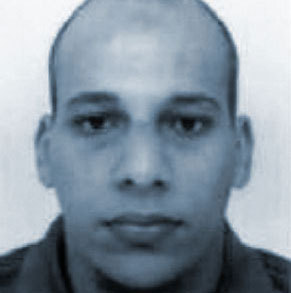
Name: Chérif Kouachi (brother of Said Kouachi, who was also involved in the attack against Charlie Hebdo)
Other names: Abou Issen, Cowboy, Shark
Nationality: French and Algerian
Affiliation: Al Qaida in the Arabian Peninsula, "des Buttes-Chaumont" connection.
Crime committed: Carried out the attack against French satirical newspaper Charlie Hebdo on January 7, 2015. He was killed in an assault by the French National Police Task Force.
Amedy Coulibaly

Name: Amedy Coulibaly
Other name: Abu Basir Al-Ifriqui
Nationality: French
Affiliation: Islamic State
Crime committed: On January 8, 2015, the day after the attack against Charlie Hebdo, he killed a French policewoman in the street. The following day, on January 9, 2015 he carried out the attack against the Hyper Casher kosher supermarket in Paris, killing 4 more people. He was finally shot dead in an assault by the RAID elite unit and the Brigade de recherche et d'intervention (BRI) after he took hostages.
Ann Hansen

Name: Ann Hansen
Other name: None
Nationality: Canadian
Affiliation: Direct Action (Squamish Five), an organization now dissolved.
Crime committed: Carried out several attacks in Canada, including against a company that manufactured electronic components for American cruise missiles in 1982 in Toronto. She was sentenced to life in prison, but was released after eight years. She is now a writer.
Daniel Andreas San Diego
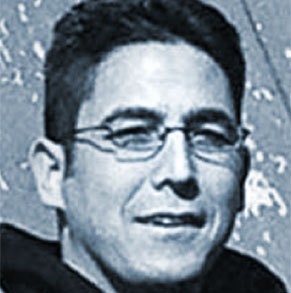
Name: Daniel Andreas San Diego
Other name: None
Nationality: American
Affiliation: Animal Liberation Brigade (ALB) and Stop Huntingdon Animal Cruelty. Both organizations are linked to the ALF.
Alleged crime: Allegedly carried out two attacks in California. The first one took place on August 28, 2003 against the building of a biotechnical company and the second one on September 26, 2003 against a nutritional product company. Currently wanted by the Federal Bureau of Investigation (FBI).
Joanne Deborah Chesimard

Name: Joanne Deborah Chesimard
Other names: Assata Shakur, Barbara Odoms, Joanne Chesterman, Joan Davis, Justine Henderson, Mary Davis, Pat Chesimard, Jo-Ann Chesimard, Joanne Debra Chesimard, Joanne D. Byron, Joanne D. Chesimard, Ches Chesimard, Sister-Love Chesimard, Chesimard, Josephine Henderson, Carolyn Johnson, Carol Brown, "Ches"
Nationality: American
Affiliation: Black Liberation Army
Crime: Escaped from the Clinton, New Jersey prison, where she was serving a life sentence for the murder of a New Jersey police officer. Currently wanted by the Federal Bureau of Investigation (FBI).
Michael Zehaf-Bibeau
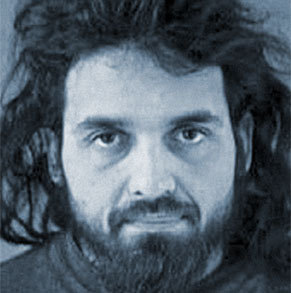
Name: Michael Zehaf-Bibeau
Other name: None
Nationality: Canadian and Libyan
Affiliation: Lone actor
Crime: Committed the attack at the National War Memorial and the Parliament of Canada in Ottawa on October 22, 2014. Was killed as a result of the police response.
Martin Couture-Rouleau

Name: Martin Couture-Rouleau
Other name: Ahmad le Converti
Nationality: Canadian
Affiliation: Lone actor and Islamic State sympathizer
Crime: Carried out an attack in St-Jean-sur-Richelieu, Quebec, on October 20, 2014. Was killed as a result of the municipal police response.
Radicalization, Internet and propaganda

Youth safety in the virtual world, just like in the real world, is everybody's concern…
The Internet has become the ideal means of communication to disseminate radical ideas to vulnerable people. The Internet acts as a vector facilitating radicalization to violence.
However, the Internet alone is not sufficient to radicalize an individual. Even if an individual is a heavy user of online material, interpersonal relationships, whether real or virtual, remain an essential factor in the process of radicalization.
The Internet poses a challenge for the prevention of radicalization leading to violence. There are ways for parents and guardians to reduce risks and to ensure safe use of the Internet for youth.
Open communication between youth and adults about responsible use of the Internet is considered a very efficient approach.
Questions you should ask yourself as a parent/legal guardian include:
- Does my child have several accounts on social media (Facebook, Twitter, Instagram, Snapchat, etc.) and does he/she use different identities in a specific network?
- Is there any indication that my child communicates online through indirect methods such as video or online games?
- Does my child use non-traditional search engines (other than Google, Yahoo!, etc.) to navigate the Invisible Web (Dark Web)?
 Source: Ducol, Benjamin. Devenir jihadiste à l'ère numérique - une approche processuelle et situationnelle de l'engagement jihadiste au regard du Web, Political Science Department, Laval University, p. 241, 2015.
Source: Ducol, Benjamin. Devenir jihadiste à l'ère numérique - une approche processuelle et situationnelle de l'engagement jihadiste au regard du Web, Political Science Department, Laval University, p. 241, 2015. -
Image description
Image 1. Pictogram representing an individual with several speech bubbles in the background (concurrence of discourses). Image 2. Pictogram representing an individual with a few speech bubbles in the background (limited number of discourses). Image 3. Pictogram representing an individual with only one speech bubble in the background (one single discourse).
The Internet, through its multiple platforms (computers, smart phones, tablets, online games, etc.), facilitates the creation of a virtual world where anonymity encourages extreme positions. It also facilitates indoctrination as well as the circulation of "conspiracy theories" and the single narrative of "Them against Us". The individual is isolated from his usual social circle (family, friends, etc.) and is presented with a virtual, radical alternative. Critical thinking is no longer an option and the Web acts as an echo chamber where the same opinions are repeated again and again and where reason and dissenting opinions are dismissed.

"Similar to sects, calls to violence such as those of the Islamic State armed group can attract fragile young people searching for guidance […] Religion – any religion – can be beneficial to someone seeking a sense of belonging, but it can also be misleading when it is given a Manichean interpretation by someone looking for a sense of superiority or for a cause."
In addition to spreading hate propaganda, the Internet gives access to tactical advice to counter security measures. It also acts as a virtual training camp to help prepare attacks, thus eliminating the need to travel abroad. Targeted messaging – a technique used in marketing – can be a powerful tool to attract young people to an ideology. Official sites, social media, forums, webzines, videos and images are all virtual means used to deliver messages to receptive individuals.
The Internet is often used to disseminate propaganda and ideological currents. However, while it is an effective tool, the Internet is not the only means used to spread propaganda. Direct media interaction and production of manifestos, music and posters also play an important role in the process of radicalization to violence. All these tools are used to justify violent action, target the enemy and dehumanize the victims.
Extremist groups, regardless of their ideology, have long sought to incite youth by exploiting existing cultural and moral grievances and capitalizing on the natural desire for adventure shared by many young people.
As was mentioned in the two models above, radicalization can often be triggered by victimization and perceived injustices toward the individual, a group or a cause with which the individual identifies. This process of radicalization of a vulnerable individual causes an ideological change which, through progressive evolution combined with group effect, can legitimate the use of violence. Isolation, a sense of failure and a lack of social integration skills increase the vulnerability of the individual. The search for a sense of belonging to a group or a "noble" cause bigger than oneself serves to obliterate the past and build a new identity.
References
- International Association of Chiefs of Police. Building Community Resilience to Violent Ideologies, Prevention of Radicalization Study Group, 2008.
- Ducol, Benjamin. A Radical Sociability: In Defense of an Online/Offline Multidimensional Approach to Radicalisation in Martin Bouchard (Ed.) Social Networks, Terrorism and Counter-terrorism: Radical and Connected, London, Routledge, 2015.
- BOUCHARD, Martin (Ed.). Social Networks, Terrorism and Counter-terrorism: Radical and Connected, London, Routledge, 2015.
- Royal Canadian Mounted Police. Youth Online and at Risk: Radicalization Facilitated by the Internet, National Security Criminal Investigations Program, 2011.
- Bouzar, Dounia, Christophe Caupenne and Sulayman Valsan. La métamorphose opérée chez le jeune par les nouveaux discours terroristes, 2014.
- Royal Canadian Mounted Police. Radicalization to Violence in Internet – Facilitated Radicalization of Youth, 2011.
- Dubé, Isabelle and Hugo Meunier. Un jeune Montréalais radicalisé devant la justice, La Presse, [Web Site]. February 4, 2015.
- Royal Canadian Mounted Police. Youth Online and at Risk: Radicalization Facilitated by the Internet, National Security Criminal Investigations Program, 2011.
- McCauley, Clark and Sophia Moskalenko. Mechanisms of Political Radicalization: Pathways Toward Terrorism in Terrorism and Political Violence, Vol. 20, No. 3. 2008.
What you can do
1. Family members and close ones
Communication is the key. We must be able to share our concerns and understand these issues.

One and all
The public plays an important role in preventing vulnerable individuals from engaging on the path to radicalization leading to violence. An inclusive approach is the strategy to adopt to prevent this type of radicalization: in addition to law enforcement agencies, community leaders, friends, families, the workplace, teachers and social players who have the respect of radicalized individuals also play a crucial role. Education, promotion of awareness and dialogue are important tools in the disengagement and prevention process.

Youth and the Internet
Access to inappropriate material can be more easily prevented if the computer is placed in an open area where a parent is nearby. Parents should supervise the use of mobile electronic devices and monitor downloading activity and the sites visited. They can also visit the websites accessed by their children and report material of concern to their Internet service provider, or refer to a service agency or their local police service. Parents can also raise their children's awareness about inappropriate content and engage in an open and frank dialogue with them.

Family
Parental guidance is essential to give direction to a potentially vulnerable young person. Parental guidance provides a shield against propaganda that promotes the use of violence. More importantly, family members and close ones must maintain a bond with a young person who becomes radicalized. It is important for parents facing this situation to seek support. (See Assistance and Reporting section)
References
- Smith, Angus. Radicalization – A Guide for the Perplexed, Royal Canadian Mounted Police, 2009.
- Royal Canadian Mounted Police. Youth Online and at Risk: Radicalization Facilitated by the Internet, National Security Criminal Investigations Program, 2011.
2. Police services
The objective of the different community awareness programs implemented by police services is to engage all communities in the social problem-solving process to ensure the safety and security of the Canadian public. In Canada, the successful Community Mobilization Prince Albert program (Saskatchewan, Canada) is an example of this.
The following graphics show the percentage of originating agencies reporting at-risk situations compared to the leading agencies taking charge of these situations. While the police report a significant number of cases, ultimately, referring cases to the appropriate agency results in a lighter caseload for the police.

Note: In the graphics, the figures next to the agencies represent the number of at-risk situations. Study period: September 1, 2013, to August 31, 2014
-
Image description
Originating agencies
- Police (133): 55%
- Education (47): 19%
- Social Services (32): 13%
- Other (32): 13%
Lead agencies
- Social Services (75): 31%
- Police (57): 23%
- Health (45): 18%
- Education (43): 18%
- Other (24): 10%
Community Mobilization Prince Albert (CMPA)
The Hub Model is an evidence-based collaborative problem solving approach that draws on the combined expertise of relevant community agencies to address complex human and social problems before they become policing problems. The basic principle is that if something bad is predictable, it is also preventable.
The Hub itself is a twice-weekly, ninety-minute discussion among front line professionals representing multiple human service disciplines serving the city of Prince Albert and its surrounding feeder communities. It connects people at risk to the services that can help them make positive choices in a timely fashion.
The average length of time devoted to discussing each single at-risk situation is about nine minutes, and an immediate intervention plan is developed for each situation. Initial intervention typically occurs within 24-48 hours and the life span pattern shows 53% of situations ending in one week and about 79% clearing the table in two weeks.
References
- Public Safety Canada - Community Mobilization Prince Albert (Details)
- Bouzar, Dounia, Christophe Caupenne and Sulayman Valsan. La métamorphose opérée chez le jeune par les nouveaux discours terroristes, 2014.
Conclusion
In light of the threat of radicalization leading to violence, each of us has a role to play in preventing violent behaviour. Law enforcement is not the only way to combat this phenomenon. All Canadians should be aware of the possibility that someone close to them could become radicalized to violence. Being better informed, having a better understanding and knowing the resources available will help Canadians to be more resilient and better equipped to face the situation.
Links to additional resources to better understand and prevent radicalization to violence
- Youth Online and at Risk: Radicalization Facilitated by the Internet, Royal Canadian Mounted Police
- IACP-COT/ Radicalization 101
- Extreme Dialogue
- Let's Talk About It
- CPDSI – Centre de prévention contre les dérives sectaires liées à l'islam (French only)
- Prevent Tragedies
- Testimony of David Valla, ex-French jihadist (French only)
- Interview with Anna Erelle, French journalist who simulated an online interest for the Islamic State armed group (French only)
- Abdullah-X
Indicators
This section outlines some of the early warnings of radicalization leading to violence and signs of terrorist planning activities.
If it's suspicious, report it!
Changes in behaviour are often open to interpretation. For that reason, it is important to look for a "cluster" or pattern of changes. The presence of any of the indicators identified in this document on its own does not necessarily indicate criminal activity; however, the likelihood increases as more indicators are present. All signs must be considered in context. If you have any doubts or would like to report a suspicious incident, please contact the resources available in your area (see Assistance and Reporting section).
National Security Information Line: 1-800-420-5805
Recognizing the signs

"My son was polite, bright and curious. He liked helping people. He was my oldest son. It all happened so fast… He changed environment and friends. I had small doubts, but I never would have thought that he could leave everything, leave us… Since then, our life has changed completely and we still don't understand what happened."
Although their ideologies, motivations, political convictions and religious beliefs may differ, terrorists share one thing in common — they always go through phases of radicalization and planning of their violent actions. Throughout this process, indicators can be observed by friends, relatives or various stakeholders.
Threats to national security can come in any form and early identification is possible. Timely and appropriate reporting of threats can make a difference and ensure safety and security for all of us. To this end, it is necessary to raise public awareness (families, educators, friends, various stakeholders, etc.) about prevention.
The early signs of radicalization to violence and of planning an act of violent extremism and terrorism are outlined in this section and can be detected based on:
- Knowledge of the environment
- Experience
- Intelligence on the situation
- Assessment of what could happen
Two sets of indicators
Changes in behaviour can be observed when a person becomes radicalized to violence or prepares to commit an act of terrorism. In the case of lone actors, indicators are more often difficult to detect.
While they can be related, the indicators associated with both processes are the following:
- A. Indicators of radicalization to violence
- B. Indicators of terrorist planning activities - early signs
A. Indicators of radicalization to violence
Observable changes
In general, indicators of the radicalization to violence process are characterized by changes related to:
- Behaviour
- Appearance
- Habits
- Relationships
- Identity
- Ideology

Possible indicators include
- Significant changes of interests;
- Breaking relational ties, social isolation, change in peer groups and activities (family, friends, sports, school, etc.);
- Change in the way of thinking and interacting with others;
- Rejection of the State (politics and social values);
- Participating in radical activities or demonstrations and using extremist language;
- Attending private meetings (ideological);
- Overconsumption of hate and violent propaganda images and videos on the Internet;
- Possession of propaganda material promoting violence (pamphlets, books, videos, DVDs, music, Internet websites, etc.);
- Segregation and antagonism ("Us against Them");
- Adhering to hatred and violence;
- Glorification of violence or sacrifice;
- Perpetration of minor crimes motivated by the rejection of governments and society;
- Change in appearance and dress style;
- Use of new names or pseudonyms in social media and personal environment;
- Wearing tattoos (often hidden), signs and symbols.
About the Internet
The use of the Internet in the radicalization to violence process is outlined in the Radicalization section. However, note that particular attention should be paid to the amount of time young people spend on the Internet, to the sites they visit and to their communications on social media. The Internet knows no border or limit and is accessible to all.
Symbols and emblematic signs as indicators
Symbols in the form of emblematic signs such as logos, tattoos, flags, etc. can bear different meanings such as an indication of an individual's affiliation or allegiance to a gang, criminal organization, extremist group or terrorist group.
Intention to leave the country to travel to a conflict area – high-risk travellers
Whether it is to participate in humanitarian aid or to visit family members, travelling to a conflict area is dangerous. Making an informed decision is paramount. The Government of Canada advises Canadians against all travel in these areas. Outbreaks of violence can occur with little or no notice and travellers risk being at the wrong place at the wrong time.
A person who becomes radicalized to violence may intend to leave the country to join a terrorist organization abroad. The Government of Canada prohibits travelling to a conflict area in order to join a terrorist group. In fact, under section 83.181 of the Criminal Code of Canada, everyone who leaves or attempts to leave Canada for the purpose of committing an act outside of Canada that, if committed in Canada, would be considered as participating in an activity of a terrorist group, is guilty of an indictable offence and liable to imprisonment for a term of up to 10 years.
As a family member or stakeholder, you could observe a number of indicators that suggest the person is planning to leave.
Reference
Possible indicators include
- Talking about humanitarian aid;
- Having skills that could help in a humanitarian crisis;
- Talking about religion, sacrifice, defending oppressed peoples, the Holy Land;
- Expressing a desire to travel;
- Asking for information about passports (possibility of using multiple passports);
- Acquiring a plane ticket;
- Withdrawing large sums of money, emptying account;
- Obtaining or soliciting donations from friends and parents;
- Changes in financial habits;
- Selling or disposing of personal belongings;
- Communicating on social media with individuals who have already gone or who are in a conflict zone;
- Sometimes talking about his/her intentions on social media;
- Expressing the intention to leave the country for a conflict zone;
- Talking about conspiracy theories.
The Government of Canada takes the safety and security of Canadians abroad very seriously and recommends avoiding all conflict areas. For more information, visit: Government of Canada, Travel Advice and Advisories
B. Indicators of terrorist planning activities - early signs
The planning of any act of terrorism exposes indicators that can become apparent in the days, weeks or months prior to an attack. The discovery of one or more indicators, when considered in a broader context, could help prevent an attack or threat.
"Safe house" indicators
A "safe house" can take many forms: it can be used to store chemicals, material and weapons or it can serve as a meeting place, an observation site, etc. There are suspicious indicators that can help detect terrorist activities, such as terrorist literature and propaganda, timing devices or chemicals for bomb-making.
Indicators of a "safe house" could include:
- Increased security (counter surveillance);
- Covered windows;
- Denial of access to landlord or cleaning personnel;
- Large numbers of people coming and going from the location;
- Unusual or pungent odours;
- Unusual noise at odd hours;
- Presence of unusual material;
- Frequent moves by the occupants (from one "safe house" to another).
Indicators of explosives on the premises
Acquisition and/or possession of material (storage)
- Unusual or pungent odours;
- Dead plants in or around the site;
- Peeling or discoloured interior paint;
- Unusual corrosion in sinks or toilets;
- Various material (ice baths, thermometers, lab glassware, eye droppers, filters, scales, etc.);
- Refrigeration equipment such as commercial freezers;
- Windows open regardless of temperature;
- Watches, cell phones, wiring, detonators and circuitry;
- Photos, mapping and charting plans, road maps, plans of potential targets;
- Surveillance material: night vision goggles, binoculars, cameras;
- Rental of a self-storage space (for storing and/or handling chemicals);
- Theft or purchase of detonators, fuses, chemical precursors, fertilizers, etc.;
- Unusual deliveries of chemicals, including fertilizers, directly from the manufacturer to a self-storage facility or a residential or rural address;
- Repeated or large purchases of fertilizers;
- Material for making explosives: hydrogen peroxide, fertilizers, ammonia, batteries, literature and websites, pressure cookers, nails, bolts, gas bottles, etc.;
- Evidence of unexplained chemical fire;
- Literature or notes on bomb-making;
- Small test explosions in rural areas;
- Websites explaining how to make or use explosives;
- Acquisition of related knowledge.
Physical evidence or characteristics of bomb-making activity
- Chemical burns on skin or acid holes in clothing;
- Suspicious wounds, scars or missing body parts;
- Chronic headaches or sore throat caused by chemicals;
- Change of hair colour (use of hydrogen peroxide to make bombs can result in hair becoming lighter).
Observable indicators
- Close monitoring of security personnel;
- Taking notes, photos or recordings of potential targets;
- Surveillance and reconnaissance of targeted locations and their security systems;
- Fraudulent identification, such as a false uniform or a stolen access pass;
- Testing security to determine how security personnel react to incidents (e.g.: triggering a false alarm);
- Attempting to access restricted areas;
- Attempting to obtain access cards for restricted areas;
- Writing a note or recording a video to claim responsibility or to justify actions;
- Nervousness or anxiety;
- Attempting to elicit information (unusual questions);
- Acquiring expertise/training (pilot training, paramilitary training, weapons training, using drones, paintball, etc.);
- Fundraising activities (foundations, fraud, etc.);
- Visiting unusual Web pages, research on potential targets.
Extremist groups
This section of the guide identifies the leading national and international extremist groups, organizations, movements and symbols. They fall into three main categories: extremist right-wing groups, extremist left-wing groups and groups driven by a single motivation.
A. Right-wing Extremism
1. Groups, organizations and ideologies

"My childhood is a story of violence. Beatings, brutality, abuse, from as far as I can remember violence is what I was taught. I grew up trying to do the only thing I knew and identified with; I had been so deeply wounded. Violence is now part of the past and I do everything I can to stay away from it. Unfortunately, I cannot forget."
Right-wing extremism can be defined as the various movements that either by tradition, patriotism, nationalism, fascism, or adhesion to a counter-revolutionary ideology, are hostile to both the socialist and liberal conceptions of society. A significant number of extreme right groups have been observed in Canada over the years; however, it is important to understand that these groups have few members and that the members often change groups or belong to several groups at the same time. When new groups are created, it does not necessarily mean that new members join the movement. Extreme right groups, often led by charismatic leaders, can be short-lived or serve as facades. Rightwing extremism encompasses a large, loose, heterogeneous collection of groups and individuals espousing a wide range of grievances and positions; these groups can sometimes be in conflict with each other.
In general, members of extreme right groups are proud of the ideology behind their movement and tend to keep a high profile.
References
- Canada Security Intelligence Review Committee. The Heritage Front affair: report to the Solicitor General of Canada, Ottawa, 1994.
- Barrett, Stanley R. Is God a Racist? The Right Wing in Canada, Toronto, University of Toronto Press, p. 40, 1987.
- Ellis, James O. and Richard Parent. Right-Wing Extremism in Canada. TSAS Working Paper, 2014.
- Ross, Jeffrey Ian. Contemporary Radical Right-Wing Violence in Canada: A Quantitative Analysis in Terrorism and Political Violence, Vol. 4, No. 3, 1992.
- Ku Klux Klan
- Church of the Creator
- Heritage Front (HF)
- Blood & Honour
- Combat 18 (C18)
- Golden Dawn
- Hammerskins Nation
- Aryan Guard
- Skinhead Movement
Ku Klux Klan
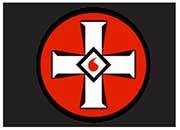
Ku Klux Klan symbol

The Grand Dragon of the Michigan Klu Klux Klan
Date of creation
1865
Founder
A group of ex-officers of the U.S. Confederate Army
Classification
White supremacist, religious
Description
The Ku Klux Klan, a white protestant supremacist organization commonly called the Klan or KKK, was created after the civil war in the United States. It is considered as the 'granddaddy' of the right-wing extremist movement. The name of the organization is derived from the Greek word kuklos, which translates to English as "circle". The group changed the Greek word slightly to kuklux and added the word klan to note the Scottish heritage of the group's first members. Today, the KKK is a marginalized organization, replaced by neo-Nazi groups. In Canada, the KKK has long been a concern for the security services mainly because of its paramilitary tendencies. It held training camps and its objective was clearly related to racial war. While the Ku Klux Klan has almost disappeared, its symbolic significance remains considerable.
Illegal or violent activities
In the United States, members of the KKK have been charged with violent crimes and murder. In Canada, the KKK is mostly known for their acts of intimidation and racist incidents: violence, letters of threat, burning crosses to scare their detractors and demonstrations against immigrants, Asians, Catholics and French-speaking people. Some members have been involved in homicides or attempted murders.
In 1987, two men pleaded guilty in Alberta for their involvement in a KKK conspiracy to bomb a Jewish centre in Calgary and kill a Jewish businessman. Their objective was to increase tensions between the Jewish and Arab communities. In 1991, an Aboriginal man was murdered in Saskatchewan by a leader of the Ku Klux Klan in Canada. The same year, a man was beaten, stoned and thrown in a river in Winnipeg because he was homosexual. At least one of the four murderers was a member of the KKK.
Specific symbols
The members of the KKK wear a distinctive white costume: a robe and pointed hat that only shows the eyes. One of their well-known intimidation tactics is to burn giant wood crosses in public locations. The group also uses the confederate flag and the Celtic cross as their symbols.
References
- Baysinger, Timothy G. Right-Wing Group Characteristics and Ideology, Naval Postgraduate School Monterey, Center for Homeland Defense and Security, 2006.
- Dictionnaire Larousse - Ku_Klux_Klan
- Sher, Julian. White Hoods: Canada's Ku Klux Klan, Vancouver, New Star Books, 1983.
- Reuters. Two Canadians sentenced to five years in Ku Klux Klan plot, 1989.
- Bourgeault, Ron. The Killing of Leo LaChance, Canadian Dimension, Vol. 28, No. 2, 1994.
Church of the Creator

The Church of the Creator logo
Date of creation
1973
Founder
Ben Klassen
Classification
White supremacist, completely rejects Christianity
Description
The organization describes itself as a religion, the white race's religion. This complex doctrine is called "Creativity". It was designed with the idea that Odinism (a Viking religion) and the Christian identity were completely lost. The ideology of the group is based on Racial Holy War (RaHoWa), a name also given to the musical group of one of its historic leaders.
Illegal or violent activities
In the United States, the group is considered to be extremely violent. The members are responsible for several murders and openly call for violence. In Canada, the group took part in confrontations related to musical events. The then leader, George Burdi, was found guilty of kicking a female left-wing militant in the face during a concert.
Specific symbols
The group has a red and black flag featuring a large "W", a crown and a halo in a white circle. The members have tattoos or ostentatious items with "RAHOWA" written on them.
Reference
- Ellis, James O. and Richard Parent. Right-Wing Extremism in Canada, TSAS Working Paper, 2014.
Heritage Front (HF)
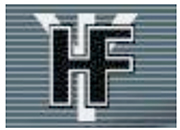
Heritage Front logo
Date of creation
1989
Founder
Wolfgang Droege
Classification
White supremacist, nationalist
Description
The year the Heritage Front (HF) was created, some of its members traveled to Tripoli to celebrate the 20th anniversary of the Libyan revolution. The Libyan President, Muammar Gaddafi, funded left and right wing groups that shared his anti-Jewish, anti-capitalist and anti-communist vision. Extreme right groups in need of funds and support easily forged ties with the regime. A few years later, HF became the most important advocate of white supremacy in Canada.
The group had two branches: political and military. The Heritage Front was allied to The Church of the Creator. It is no longer active today.
Illegal or violent activities
Some members of the HF participated in violent confrontations along with members of The Church of the Creator, while several members belonged to both groups. Events of violence were attributed to the group, such as the attack on a Vietnamese shopkeeper in Toronto in 1989 and on a Tamil refugee in 1993.
Specific symbols
The sign of the group consists of the letters "HF". The life rune, in the background, refers to the spiritual dimensions of protection and honour. It was used in different contexts by the Nazis and was appropriated by many white supremacist groups.
Reference
- Canada Security Intelligence Review Committee. The Heritage Front affair: report to the Solicitor General of Canada, Ottawa, 1994.
Blood & Honour

Blood & Honour Symbol
Date of creation
1987
Founder
Ian Stuart Donaldson
Classification
Anti-communist, neo-Nazi, nationalist, white supremacist
Description
Blood & Honour is known as a network for the promotion of neo-Nazi music. The name Blood & Honour is the same as the slogan of the Hitler Youth, "Blut und Ehre" (Blood and Honour). The founder of the group, Ian Stuart Donaldson, was the singer and leader of the extreme right British rock band Skrewdriver advocating neo-Nazi convictions. Ian Stuart Donaldson died in 1993 but is still revered by the organization. Blood & Honour publishes an eponym magazine promoting neo-Nazism through interviews with extreme right musical groups and the promotion of concerts featuring White power musical groups.
Blood & Honour has several official divisions in approximately twenty countries, including Great-Britain, the United States, Italy, Belgium, France and Spain. In Canada, the group is present in Quebec, Ontario and Alberta.
Illegal or violent activities
The various divisions of Blood & Honour organize concerts and white pride rallies that bring together skinheads and other neo-Nazi supporters. Many acts of violence are attributed to members affiliated to the group. For example, in 2012, in British-Columbia, two members were charged with hate crime and aggravated assault against a citizen of Filipino origin.
Specific symbols
In addition to the symbols identified to Blood & Honour such as the triskele made up of three 7s and the words "Blood & Honour", other symbols of the Nazi era are also used: flag, swastika and skull. The members of the organization also use other white supremacy symbols such as the United States Confederate flag (American Civil War), the Celtic cross and the old South African flag (from the Apartheid era). They use photos of white supremacists killed for the cause and a variety of symbols of the group Combat 18, the armed and radical branch of Blood & Honour.
Reference
Combat 18 (C18)

Combat 18 symbol

Combat 18 illustration
Date of creation
1991
Founder
Charlie Sargent
Classification
Neo-Nazi, white supremacist
Description
Combat 18 is the armed and radical branch of Blood & Honour. The movement is present internationally. The number 18 refers to the letters A and H, the initials of Adolf Hitler. Combat 18 is a neo-Nazi organization advocating white supremacy, anti-Semitism and islamophobia. It has long been associated with loyalist terrorist organizations in Northern Ireland. Combat 18 is present in various countries, including Great-Britain, Italy, South Africa, Argentina, Belgium, Germany, Russia, Serbia, Denmark, Sweden, Austria, the United States and Canada.
Illegal or violent activities
Combat 18 is known for its violent actions, including murder and bombing. In Great-Britain, several members including active soldiers were charged with acts of violence. In 2010, three Australian activists were charged in relation to an armed attack against a mosque.
Specific symbols
The members of the group use the same symbols as Blood & Honour. However, an important place is given to weapons in the symbols and public appearances.
References
- Independent.co.uk - Combat 18: Memoirs of a street-fighting man
- Schweizer, Daniel (director). Skinhead Attitude [documentary], Switzerland, 2003.
- Perth Now - Alleged Combat 18 members in court over mosque shooting
Golden Dawn

Golden Dawn flag
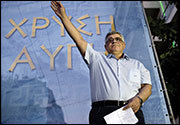
Nikós Michaloliákos, leader of the Greek political party Golden Dawn in 2012
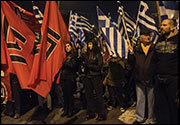
Athens, Greece: Activists from the Golden Dawn
Date of creation
1993
Founder
Nikós Michaloliákos
Classification
Neo-Nazi, xenophobic
Description
Golden Dawn is a Greek radical, far-right neo-Nazi political party created in 1993. The founder, Nikós Michaloliákos, openly denied the existence of the crematory ovens and gas chambers in Nazi concentration camps during the Second World War. Despite the arrest of many of its supporters, the party won 17 seats in the Greek election of 2014.
Present in Canada since 2012, Golden Dawn has two chapters, one in Montréal and one in Toronto. The objective proclaimed by these chapters is to provide support and assistance to Greek-born citizens.
Illegal or violent activities
In September 2013, in Greece, the party leader and five other parliamentarians were arrested and charged with participation in a criminal organization. It was alleged that they were responsible for the murder of a far-left activist. Thirteen other activists and two police officers were also arrested. It should be noted that, to date, the group has never committed any illicit act in Canada.
Specific symbols
The group sometimes uses the Celtic cross as a symbol. It also has a red flag and uses messages written in Greek.
Reference
HAMMERSKINS NATION

Symbol of the group Hammerskins Nation

Hammerskins Nation 14 chapters, including one in Canada
Date of creation
1988
Founder
Sean Tarrant
Classification
Racist, white supremacist
Description
The Hammerskins Nation was created in 1988 in Texas. It has 14 chapters in America and Europe. The organization has no leader, but rather relies on the autonomy and loyalty of its adherents.
In Canada, the group is represented under the name Vinland Hammerskins, a group originating from Montréal. Drawing on an ideology advocating white supremacy, this group, essentially composed of racist right-wing skinheads, is characterized by the violence and extremism of its actions. The Hammerskins Nation is the most feared and respected of the racist skinhead groups in the United States.
Illegal or violent activities
The Canadian members of the group engage in significant violence, even outside Canada. In one case, three young Canadians affiliated to the Hammerskins Nation were found guilty of the murder of an Afro-American man in Texas in 1993.
Specific symbols
Supporters of the Hammerskins Nation use The Wall video clip by Pink Floyd as a model. In this video clip, two hammers symbolize fascism. The Hammerskins Nation supporters also use various Nazi symbols as well as photos of "martyrs", representing members who were killed. The members cross their arms to represent the two hammers and some also have hammers tattooed on their forearms. This also refers to the sign used by a fictive fascist society in the movie "1984" based on the novel by George Orwell.
Reference
Aryan Guard

Aryan Guard Symbol
Date of creation
2006
Founder
Kyle Mckee
Classification
Neo-Nazi, white supremacist
Description
The Aryan Guard was created in Calgary, Alberta. The group claims to be the new version of white supremacy, more present and visible. The group has participated in demonstrations and organized its own marches from the very beginning. The leader occupies a central position and is even called the "micro-fuhrer". He and his group attract individuals who will travel to Calgary to participate in their activities.
Illegal or violent activities
Some members were charged with various acts of violence, assault causing bodily arm and making explosives. The National-Socialist Party of Canada (NSPC), a non-registered political party, had ties with the Aryan Guard. The NSPC leader, Terry Tremaine, who was invited to attend conferences organized by the Aryan Guard, was sentenced to 30 days in jail for acting in contempt of an order of the Canadian Human Rights Tribunal and was ordered to remove racist postings on websites.
Specific symbols
The group often uses the Celtic cross and the words "White Pride, Worldwide" either on tattoos or on their flag. The swastika is also one of their symbols.
References
- Vice.com - A New Look at Calgary's Neo-Nazi Movement
- TheGlobeandMail.com - Calgary's in-your-face neo-Nazis take to the streets
- TorontoSun.com - White power fizzles as Aryan Guard calls it quits
Skinhead Movement
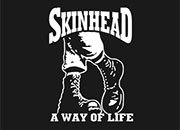
Skinhead movement logo
Date of creation
1970-1980
Founder
Unknown
Classification
Neo-Nazi, white supremacist, xenophobic
Description
The skinhead movement or sub-culture started in the United Kingdom within the working class. It has several variants, including the neo-Nazi extreme right movement and an extreme left variant (group SHARP) claiming to be antiracist and non-political. Racist right-wing skinheads are well-established in Canada. While some groups and individuals are independent, white supremacy music plays an important role in this movement.
In the late 1970s and early 1980s, the first skinheads appeared in major cities in Canada (Montréal, Vancouver, Toronto and Calgary). First seen in urban areas, the movement progressively spread to small towns and rural areas. At first, it was based more on "neo-Nazi folklore" than an outright ideology. It developed into something ideologically structured when extreme right groups started recruiting within the movement. The international skinhead culture, particularly through its music, is at the root of a clear ideology and receptivity to right-wing extremism among youth in Canada. The movement includes, or included, various organizations such as Longitude 74, the White Federation, the Aryan Resistance Movement (ARM), United Skinheads of Montreal, although most members do not have any allegiance to a formal organization. A significant number of skinheads are part of extreme right groups that are not exclusive to this sub-culture. For example, groups such as the Aryan Nations and White Aryan Resistance, that are more popular in the United States, have welcomed many members of this sub-culture. The extreme right skinheads are called "boneheads" by the left wing, in reference to their shaved heads. They use Internet sites to recruit and spread their ideology. However, they prefer personal contacts to recruit and advertise their fundraising concerts.
Illegal or violent activities
Skinheads are considered as the "soldiers" of the white supremacist movement. The violence used by the movement is mainly expressed at concerts and demonstrations. Skinheads are also responsible for actions perpetrated against individuals or symbolic sites, such as mosques.
Racist crimes are an integral part of the skinhead movement's history and also serve as initiation rites. However, other types of crime and violence are identified every year, including altercations between gangs and crimes perpetrated for no apparent reasons.
Specific symbols
The most common signs used by this extreme right movement are the Celtic cross and the swastika, in addition to various numbers associated to right-wing extremism. Shaved or very short hair, sweaters featuring the names of extreme right groups or racist messages, bomber jackets, jeans, suspenders, combat pants and boots characterize the physical appearance of the followers of this movement. The colour of the suspenders and boot laces can also be indicative of whether the group is racist or not, or indicate the position of the member in the organization. However, the colours are different for each group and area.
Adherents to the extreme left movement Skinhead Against Racial Prejudice also wear military type clothing and the crushed swastika symbol or the SHARP logo. They do not shave their heads completely.
References
- Ellis, James O. and Richard Parent. Right-Wing Extremism in Canada, TSAS Working Paper, 2014.
- Young, Kevin and Laura Craig. Beyond White Pride: Identity, Meaning and Contradiction in the Canadian Skinhead Subculture, Canadian review of sociology and Anthropology, Vol. 34, No. 2, 1997.
- Hubert, Daniel and Yves Claudé. Les Skinheads et l'extrême droite, Montréal, VLB, 1991.
- Campana, Aurélie and Samuel Tanner. The Process of Radicalization: Right-Wing Skinheads in Quebec, TSAS Working Paper, 2014.
2. Books, symbols, numbers and letters associated to right-wing extremism
A variety of books, symbols, numbers and letters taken from the extreme right ideology are used to identify affiliation to a group. These may appear on clothes, tattoos and graffiti. Particular nonverbal gestures may also suggest an association to a group such as the Nazi salute or indicating specific numbers with fingers.
- The Turner Diaries
- Mein Kampf
- White Fist or Aryan Fist
- Celtic Cross
- Swastika
- The Odal rune
- Totenkopf
- 14/88
- 4/20
- 23
- Rahowa
The Turner Diaries
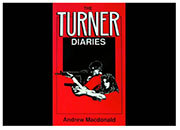
The Turner Diaries book cover
Date of creation
1978
Classification
White supremacist
Description
The Turner Diaries is not considered a significant symbol, but it holds an important place in right-wing extremism and among rightwing adherents. The sci-fi novel was written by William Pierce, the founder of the National Alliance, a very important extreme right group in the United States. It depicts a violent revolution in the United States that results in the overthrow of the federal government and a racial war against Jews, homosexuals and non-Whites.
This particularly violent story is read by members of the extreme right worldwide and influences some of them in their doctrines and actions.
Mein Kampf

Adolf Hitler's book, Mein Kampf
Date of creation
Between 1924 and 1925
Classification
Nazi
Description
This book was written by Adolf Hitler while he was incarcerated in Landsberg prison. This autobiography outlines racist theories and the premise of the Nazi movement. It is legally sold in Canada and is a source of inspiration for many white supremacists, especially neo-Nazis. It is also a source of veneration for many followers of Adolf Hitler's movement and ideology.
White Fist or Aryan Fist

White Fist logo

Extreme right-wing terrorist, Anders Breivik, giving a salute at his trial in 2012 for killing 77 people and injuring 151.
Date of creation
Unknown
Classification
White supremacist
Description
The White Power proposes the White Fist, or Aryan Fist, as a symbol of the fight of Aryan people for their survival.
The White Power doctrine is associated to the neo-Nazi movement that seeks hegemony using violence as a means of coercion. The White Power doctrine is the fundamental ideological source motivating the actions of extreme right-wing skinhead groups. This ideology has spread everywhere in the world where there are white people. The White Fist is a response to the symbol of the raised fist used by the Black Power movement.
Celtic Cross

Celtic Cross
Date of creation
Early 8th century
Classification
Racist, nationalist
Description
The Celtic cross is a common symbol in Ireland and Great-Britain. It is generally associated to Celtic communities. The Celtic cross was appropriated by various nationalist movements.
The Celtic cross is often used by right-wing extremists to symbolize the White Power, among other things.
Swastika
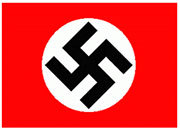
Swastika
Date of creation
1920
Classification
Nazi, neo-Nazi
Description
The swastika is the official emblem of the Nazi ideology. It is still popular today with the resurgence of the neo-Nazi movement worldwide. However, it should be noted that different groups try to use derivative or less ostentatious symbols to avoid attracting attention and circumvent the laws in countries where the use of certain images or Nazi representations is prohibited.
The swastika is very important in Hinduism and Buddhist cultures, but does not have a negative connotation.
The Odal rune
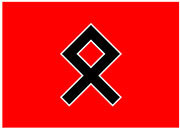
The Odal rune

"Wiking Jugend", a German neo-Nazi organization illegal since 1994. The organization used the Odal rune as a symbol.
Date of creation
1933 (start of the 3rd Reich)
Classification
Nazi, neo-Nazi
Description
The signification of the Odal rune for the neo-Nazis goes back to the beginning of the Proto-Germanic era where it meant "heritage". This symbol was appropriated by Adolf Hitler during the Second World War. Under the 3rd Reich, the Odal rune was the symbol of the 7th SS Volunteer Mountain Division Prinz Eugen and also represented the paramilitary organization Hitlerjugend (Hitler Youth). After the Second World War, the symbol was taken by a number of neo-Nazi groups, such as the Wiking-Jugend.
Totenkopf

Logo of the SS Totenkopf Division
Date of creation
1925 at the creation of the SS
Classification
Nazi, neo-Nazi
Description
First used during the First World War, the totenkopf was more particularly present during the Second World War. This symbol refers to the Schutzstaffel (protection squad), the German army elite units, better known as the "SS". These units were in charge of concentration camps, among other things. The totenkopf is one of the most wildely known symbols typically associated to nazism.
14/88

14/88 on a Nazi symbol
Description
14/88 is used as a neo-Nazi code to avoid the legal constraints in some countries that prohibit the display and use of symbols associated to Nazi Germany.
The number 14 refers to a 14-word slogan coined by the American Nazi David Lane, claiming that: "We must secure the existence of our people and a future for White Children". The 14 words has become a mantra for neo-Nazis.
The number 88 is the juxtaposition of two letters "H", representing the eighth letter of the alphabet, with "HH" standing for "Heil Hitler".
4/20

Adolf Hitler
Refers to the birthdate of Adolf Hitler, the 20th day of the 4th month (April 20).
23

White Pride Flag
Refers to the 23rd letter of the alphabet, the letter W for white. White supremacists also express this sign by making the numbers "2" and "3" with their fingers.
Rahowa
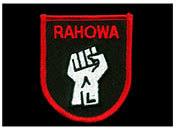
RaHoWa Symbol
Means Racial Holy War, a doctrine proclaimed by Ben Klassen of The Church of the Creator that is in line with the ideology of the group that considers white supremacy as a religion and its war as holy.
B. Left-wing Extremism
1. Groups, organizations and ideologies
Left-wing extremism is a vast political movement sharing a number of beliefs that reject capitalism, Western democracy as we know it, imperialism and militarism. These extreme beliefs, attitudes and positions are usually conveyed through a revolutionary discourse that can sometimes promote violence, often against the authorities, and even lead to acts of terrorism. Left-wing extremism draws its inspiration from the radical interpretation of different doctrines such as Maoism, Trotskyism, Castroism and Marxism-Leninism. Unlike right-wing extremists, leftists tend to be more discreet and maintain a low profile.
Reference
- Anonymous
- Black Bloc
- Anarchism
- Red and Anarchist Skinheads (RASH)
- Internationalist Resistance (IR) or Internationalist Resistance Initiative (IRI)
- Skinheads Against Racial Prejudice (SHARP)
Anonymous
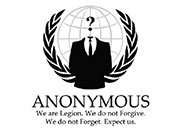
Anonymous Symbol

A protester wearing a Guy Fawkes mask stands near the White House (USA)

Protesters at a anti-capitalist protest in Britain

Protesters at a anti-capitalist protest in Britain
Date of creation
2003
Classification
Activist for freedom of speech and equality, Anonymous is not an organization as such, but rather an ideology shared by many people, especially Internet users.
Description
The Anonymous movement defines itself as "hacktivist". Its members in the Web community launch anonymous attacks on the Internet. The word "hacktivist" is the fusion of "hacking" and "activist" and implies technological knowledge and political direct action. While the Anonymous ideology is known more for technological attacks, physical involvement in demonstrations is also considerable. At public events, supporters of the movement can be recognized by their distinctive mask representing Guy Fawkes who, in 1605, attempted to blow up the British parliament. The mask also refers to the movie "V for Vendetta" based on the graphic novel about the life of Guy Fawkes.
Anonymous claims to advocate freedom of speech, equality and other causes often related to current affairs. It was also actively involved in Wikileaks, a website created by hacker Julian Assange that discloses classified information from different countries.
Illegal or violent activities
Many large-scale attacks, ranging from the disclosure of personal emails coming from big corporations to the temporary closure of government sites, are claimed in the name of Anonymous. Anonymous Canada is known to have launched computer attacks against provincial and federal websites, rendering them temporarily inaccessible. For instance, between 2014 and 2015, the websites of the Parliament, the Supreme Court of Canada, the City of Ottawa, the Ottawa Police Service and the Service de Police de la Ville de Montréal were targeted by Anonymous. In 2014, Anonymous organized rallies in large cities worldwide, including in Canada, to commemorate the anniversary of the death of Guy Fawkes, on November 5.
+Reporting
- Canadian Cyber Incident Response Centre CCIRC: cyber-incident@ps-sp.gc.ca
- Government of Canada phone assistance: 1-800-O-Canada
- Public Safety Canada - Report a Cyber Security Incident
References
- La Presse - L'Équateur garantit à Assange l'asile "aussi longtemps que nécessaire" (in French)
- NationalPost.com - Toronto police website shut down in string of cyber attacks across Canada
- GlobalNews.ca - Canadian 'hacktivists' rally to support Anonymous on Guy Fawkes Day
Black Bloc

Black Bloc Illustration

Anti G20 Protesters, thought to be part of the anarchist group the Black Bloc in the streets of Toronto, Canada.
Date of creation
1970s-1980s
Classification
Anti-capitalist. Not an organization, but an urban demonstration tactic
Description
The origin of this anarchist movement dates back to the 1970s-1980s. It started with groups of individuals advocating the reunification of Germany. The name Black Bloc was given by East Germany's political police (Stasi). Later, the Black Bloc movement evolved into an anti-capitalist movement as well as an alterglobalist and libertarian movement.
The Black Bloc is a tactic used by individuals to make themselves difficult to identify at demonstrations. Characterized by head-to-toe black clothing, the objective of the Black Bloc is to create an anonymous crowd to face the police. During demonstrations, the actions of the group are directly targeted at leading figures of capitalism in our society. These activists are sometimes involved in heated altercations with the police, considered by the movement as the armed branch of capitalism.
Variations of the Black Bloc movement are generally shortlived and mobilize through social media to demonstrate at major events.
Illegal or violent activities
The Black Bloc is often involved in the destruction of property owned by national companies and banks, as well as public property. The presence of the Black Bloc was observed in a number of demonstrations in Canada, including the 2001 Summit of the Americas in Québec City, the G20 Summit in Toronto in 2010 and the demonstration against police brutality on March 15, 2012 in Montréal. Not every group present at demonstrations agree with the Black Block. The extremist and relatively violent behaviour of the Black Bloc can create tension among demonstrators.
Reference
- LeDevoir.com - Black Bloc et carré rouge (French only)
Anarchism
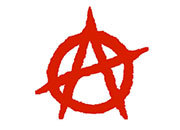
Symbol of anarchism

Demonstration against the Aéroport du Grand Ouest Project (France), fire caused by Anarchist.

Anarchist activists hold banners during an anti-G8 rally in Paris.

Anarchist activists hold banners during an anti-G8 rally in Paris.
Date of creation
Ideological current from the 19th Century
Classification
Anti-capitalist, anti-authority
Description
Anarchism is a philosophical current that is opposed to all forms of political authority. There are several variations of anarchism, some violent and others not. This anti-authority ideology conception is not synonymous with social unrest, but advocates an anti-capitalist order. There are numerous currents associated to anarchism and many groups use the anarchist symbols and beliefs to promote their ideology.
Illegal or violent activities
In 2010, an anarchist group called Southern Ontario Anarchist Resistance (SOAR) attacked a branch of the Royal Bank of Canada (RBC) during the G20 Summit in Toronto. The group claimed that the 2010 Vancouver Olympics were held on indigenous land stolen by the Government and blamed the bank for sponsoring the Games.
Reference
Red and Anarchist Skinheads (RASH)

Red and Anarchist Skinheads logo
Date of creation
1993
Classification
Anarchist, anti-fascist, anti-capitalist, pro-freedom
Description
Red and Anarchist Skinheads (RASH) is an extreme left-wing organization influenced by anarchism. Anti-fascism, anticapitalism and libertarian ideology are all fights carried out by RASH. They are represented by three arrows on the group's logo. The movement was created in New York City. It is officially present in Canada since 1994.
Illegal or violent activities
The group carries out a never-ending fight through direct action against neo-Nazi skinheads (or boneheads as they are called by left-wing skinheads).
Reference
- Schweizer, Daniel (director). Skinhead Attitude [documentary], Switzerland, 2003.
Internationalist Resistance (IR) or Internationalist Resistance Initiative (IRI)

In 2010, the Internationalist Resistance claimed responsibility for a bomb attack against the Armed Forces Recruitment Centre in Trois-Rivières, Quebec.
Date of creation
Unknown, but first claim of responsibility in 2004
Classification
Anti-militarist, socialist, pro-environment
Description
The Internationalist Resistance (IR), previously known as the Internationalist Resistance Initiative (IRI), is an extremist anti-capitalist group. The environmentalist, anti-militarist and anti-American convictions of the group are expressed through overt radicalism.
Illegal or violent activities
From 2004 to 2010, this extremist group claimed responsibility for three bombings, including the bombing of a Hydro-Québec tower in Quebec Eastern Townships in 2004. The objective of this action was to jeopardize the transmission of electricity produced in Quebec to the United States, denouncing it as "(…) the 'pillaging' of Quebec's resources for the benefit of the American Empire".
In 2006, the radical group launched an attack against the vehicle of the Vice-President and Quebec spokesperson of the Canadian Petroleum Products Institute, Eastern Division. The IR claimed responsibility for the attack to denounce the profits maide by the oil industry and the war in Iraq. In 2010, the group bombed a Canadian Forces recruitment centre located in Trois-Rivières, Quebec. The group issued a communiqué stating that it was opposed to "the militaristic practices and ideals of the Canadian state".
Reference
Skinheads Against Racial Prejudice (SHARP)
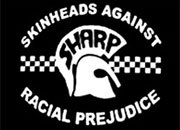
SHARP logo
Date of creation
1987
Classification
Anti-fascist, anti-racist
Description
Skinheads Against Racial Prejudice (SHARP) is a movement dedicated to fighting all forms of racism and decrying extreme right skinheads. SHARP rejects the use of the name skinhead by extreme right-wing neo-Nazis. Created in New York City in the late 1980s, SHARP recognizes the multiethnic roots of the skinhead sub-culture that was first observed in Great-Britain in the late 1960s. The movement has no political affiliation and is strongly committed to antifascism and anti-racism. The movement is present in Canada, mainly in Montréal, Toronto, Vancouver and southern Ontario. SHARP cannot be defined as a group of individuals, but rather as an informal network, with no official spokesperson and with the objective of bringing together all the extreme left-wing skinheads.
Illegal or violent activities
SHARP is not only present at counter neo-Nazi demonstrations where violence between demonstrators often occurs, but is also often involved in altercations with fascist groups. SHARP also engages in "Facho Watching", which consists in identifying far-right extremists and combatting them.
References
- Schweizer, Daniel (director). Skinhead Attitude [documentary], Switzerland, 2003.
- Campana, Aurélie and Samuel Tanner. The Process of Radicalization: Right-Wing Skinheads in Quebec, TSAS Working Paper, 2014.
C. Sole motivation
1. Groups, organizations and ideologies
This category encompasses groups that are neither associated with to left-wing extremism nor right-wing extremism. These groups are motivated by a specific cause, such as the protection of the environment, the defense of certain rights or the abolition of certain laws.
Animal Liberation Front (ALF)

Animal Liberation Front logo
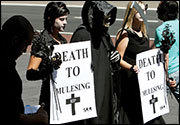
Members of the group Animal Liberation Front, one dressed as the 'Grim Reaper' and two as Ladies of Death walk through Sydney

Protestors from the Animal Liberation Front
Date of creation
1976
Classification
Activist for animal rights. Not an organization per se, but rather a platform.
Description
The Animal Liberation Front (ALF) is an international movement that brings together activists resorting to direct action (e.g.: destruction of property and equipment) to fight for animal rights.
Illegal or violent activities
The organization often engages in illegal actions to promote its convictions and is therefore considered as a terrorist group by some governments. The organization rescues and liberates animals, but also carries out acts of vandalism by destructing equipment and property.
According to the FBI, the Animal Liberation Front (ALF) and its environmental equivalent, the Earth Liberation Front (ELF), have perpetrated over 1,100 criminal acts on American soil only, with damages amounting to more than a hundred million dollars. Among the FBI's most wanted individuals, Joseph Mahmoud Dibee and Josephine Sunshine Overaker, both members of a group called The Family affiliated to ALF and ELF, are wanted for $48 million in damages, including $26 million for and attack against the Vail Ski Resort in 1998.
In Quebec, in 2008 and 2014, several thousand minks from a fur farm were liberated by anti-fur activists as was done in British-Columbia in 2013. In Canada, members of this organization have also attacked hunters. In 2014, the group injected butyric acid into the office of the Canadian Association for Laboratory Animal Science (CALAS) in Toronto.
References
- LePoint.fr - Végans extrémistes : Alex, cadre bancaire, marqué comme une bête
- Fbi.gov - Testimony - Testimony on Animal Rights Extremism and Ecoterrorism (archive)
- Zone libre, Radio-Canada.ca - Le Front de libération des animaux
Earth Liberation Front (ELF)

Earth Liberation Front logo

Daniel McGowan was sentenced to seven years in prison for his activities with the radical Earth Liberation Front.
Date of creation
1996
Classification
Ecologist
Description
The Earth Liberation Front (ELF) is an international ecologist movement created in England. The extremist group uses radical means to stop the exploitation and destruction of the environment. It is a resistance group with no official representative or leader. This tactic of having no official leader is used by numerous groups such as the Ku Klux Klan (KKK) to avoid being infiltrated by the authorities. The members, often called "Elves", share the same ideology and operate in cells, with no chain of command. Their only known spokesperson, the American Craig Rosebraugh, encouraged ALF and ELF members to use violent tactics and support conspiracy theories.
The Earth Liberation Front (ELF) and the Animal Liberation Front (ALF) still maintain their cooperation and link.
Illegal or violent activities
The Earth Liberation Front advocates direct action, including arson and vandalism, to support its convictions. ELF also resorts to sabotage or monkeywrenching, which consists in a range of actions such as graffiti on buildings and vehicles, the destruction of equipment, etc.
Rebecca Rubin, a Canadian ecologist activist of the ELF and ALF radical movement, who was wanted and described as an eco-terrorist by the United States, surrendered to the Washington State authorities in 2013. She pleaded guilty to charges of arson and conspiracy between 1997 and 2001 and was sentenced to five years in jail in January 2014. In 2003, ELF was involved in the destruction of a $23 million apartment complex in the San Diego area in the US.
References
- Leader, Stefan H. and Peter Probst. The Earth Liberation Front and Environmental Terrorism in Terrorism and Political Violence, Vol. 15, No. 4, 2010.
- NYTimes.com - The Face of Eco-Terrorism
- Macleans.ca - Rebecca Rubin's day of reckoning
Freemen on the Land (FMOTL)

Freemen on the Land logo
Date of creation
The 1970s
Classification
Anti-government
Description
Freemen on the Land (FMOTL), or Sovereign Citizens, is an anarchist movement with extreme right tendencies. It was initiated in the United States and its adherents advocate the return to the values of the founding fathers of the United States, where the state and statute laws were less present. This movement is on the FBI's domestic watchlist and is also present in Canada, Ireland and the United Kingdom.
FMOTL encourages different forms of rejection of the state, including by refusing to use driver's licences, to register or insure their vehicles and to pay taxes. Some members also do not recognize the courts of law and refuse to be tried by them. They are categorized as "separatist" by a number of authors and it is believed that a manuscript known as the "Nehemiah Township Document and Common Law Contract" provides the foundation for separatist organizations. A religiously-based Republican government, in which only Aryan freemen would have rights, was the ultimate goal of the Nehemiah Township Charter. The slogan of certain freemen is "Think free, be free".
Illegal or violent activities
Many freemen were involved in provincial and federal offences, with some also involved in serious crimes. In 1995, in the United States, Terry Nichols was one of the terrorists involved in the Oklahoma City bombing against a FBI building that killed 168 people. The American authorities reported that since 2000, six police officers were killed by freemen. In 2015, a member of the Edmonton Police Hate Crimes Detail was killed by Norman Raddatz, an individual who demonstrated ideologies consistent with the FMOTL movement.
In the last few years, freemen filed liens on property owned by judges, both in the United States and Canada. This tactic was observed in 2012 in Quebec and British Columbia. There are also many cases, such as in Calgary in 2013, when a member of FMOTL, Andreas Pirelli, who after receiving an eviction order from the Court illegally confiscated the house of a retired woman and claimed the house as his "embassy". In Quebec, one of the members of the Citoyens souverains, the Quebec version of the Freemen on the Land, Jean-Marc Paquin, had his vehicle seized by the authorities for failing to make complete payment and was fined $27,000 for causing harm to the authorities.
Symbols associated to freemen include biblical references, postage stamps placed on documents, bar codes, fingerprints and blood seals. They also use different names in official documents to confuse the authorities.
References
- The Law Society of British Columbia - The Freeman-on-the-Land movement
- Baysinger, Timothy G. Right-Wing Group Characteristics and Ideology, Naval Postgraduate School Monterey, Center for Homeland Defense and Security, 2006.
Listed terrorist entities

"We think terrorism happens elsewhere… I was 12. One night, my father told me that the plane my mother was on exploded in mid-air. The last image I have of her is her lifeless body, lying on a metal table. In her honour, I made a promise to work in a field where I could make people's living environment healthier, peaceful and safer. I am now a lawyer, a victim of terrorism and an advocate for all victims of terrorism."
This section presents the terrorist entities appearing on Public Safety Canada's official list. Each fact sheet contains relevant information on each group: description, names, symbols, objectives, prominent attacks, etc.
** Refer to Public Safety Canada's website for the most up-to-date list of terrorist entities. The content of this section was taken directly from the Public Safety Canada's website and Justice Canada's website.
Listed terrorist entities in Canada
A terrorist entity listed in Canada may or may not be listed in other countries. Listing an entity (i.e. person, group, etc.) makes its association with terrorism formally and publicly known.
While it is not a crime to be listed, the listing of a terrorist entity triggers a number of enforcement actions. In concret termes, listing an entity implies that its assets may be frozen, seized/restrained, and may be subject to forfeiture with the aim of a seriously disrupting the entity's activities.
Formal listing makes it illegal for any Canadian to participate, whether willingly or not, in the activities of the listed entity. No individual or institution is allowed to contribute, either financially, materially or physically, to facilitating the activities of a listed terrorist entity.
Canadian definition of terrorist activity
"The Criminal Code defines terrorist activity to include an act or omission undertaken, in or outside Canada, for a political, religious or ideological purpose, that is intended to intimidate the public with regard to its security, including its economic security, or to compel a person, government or organization (whether in or outside Canada) to do or refrain from doing any act and that intentionally causes one of a number of specific forms of serious harm."
Anti-Terrorism Act, 2001
Adopted by Parliament following the attacks of September 11, 2001, the Anti-Terrorism Act (ATA) amended the Criminal Code, the Official Secrets Act, the Canada Evidence Act, the Proceeds of Crime (Money Laundering) Act and a number of other Acts. It also enacted the Charities Registration (Security Information) Act. It was not a stand-alone Act, but rather an amending statute. The ATA formed a key component of the Government's Anti-terrorism Plan, which had four objectives:
- to prevent terrorists from getting into Canada and protect Canadians from terrorist acts;
- to activate tools to identify, prosecute, convict and punish terrorists;
- to keep the Canada-U.S. border secure and a contributor to economic security; and
- to work with the international community to bring terrorists to justice and address the root causes of violence.
The ATA reflected a commitment to the safety of all Canadians and strengthened Canada's ability to meet its international obligations, while respecting Canadian values and the rights enshrined in the Canadian Charter of Rights and Freedoms (Charter). Canada's enactment of the ATA paralleled actions taken by its international partners. However, it was a made-in-Canada solution to address terrorism.
Identify, prosecute, convict and punish terrorists
Terrorist activities in Canada have always been treated as criminal. The ATA creates measures to identify, prosecute, convict and punish terrorist groups; provides new investigative tools to law enforcement and national security agencies; and ensures that Canadian values of respect and fairness are preserved and the root causes of hatred are addressed through stronger laws against hate crimes and propaganda.
** For more Information: Department of Justice, About the Anti-Terrorism Act
Anti-Terrorism Act, 2015
In line with measures taken by our allies, the Government of Canada is implementing legislation that is helping our law enforcement and national security agencies stop those who promote the commission of terrorism offences in general, such as calling for attacks on Canadians.
The Anti-Terrorism Act, 2015 received Royal Assent on June 18, 2015. Through this legislation, the Government of Canada is taking action to prevent terrorist travel, thwart efforts to use Canada as a recruiting ground and prevent planned attacks on our soil.
Stopping the promotion of terrorism
By criminalizing the promotion of the commission of terrorism offences in general, the Government is providing an additional tool for law enforcement to counter radicalization to violence and to assist community leaders and family members in their efforts to counter it.
Preventing terrorists from recruiting others
The Government of Canada is providing the courts with the authority to order the takedown of terrorist propaganda − to interfere with terrorists' efforts to radicalize and recruit others − the same types of authorities that currently exist for harmful materials such as child pornography and hate propaganda. The Government of Canada is also enabling the sharing of information related to national security, across federal departments and agencies, to ensure that authorities can better identify those with terrorist links and intentions. This will also stop them from travelling by air for terrorism purposes.
Disrupting terrorist plots and preventing planned attacks
The Government of Canada is making it easier for police to detain suspected terrorists before they can harm Canadians, assisting national security agencies in preventing non-citizens who pose a threat from entering and remaining in Canada, and giving the Canadian Security Intelligence Service the ability to intervene against specific terrorist plots.
** For more information: Public Safety Canada's website
54 Listed terrorists entities in Canada
Listing an entity is a way to publicly identify a group or individual associated with terrorism.

World map with listed terrorists entities, by region:
Americas: 6
- 17. Autodefensas Unidas de Colombia (AUC)
- 21. Ejército de Liberación Nacional (ELN)
- 23. Fuerzas Armadas Revolucionarias de Colombia (FARC)
- 30. International Relief Fund for the Afflicted and Needy – Canada (IRFAN)
- 51. Sendero Luminoso (SL)
- 54. World Tamil Movement (WTM)
Europe: 2
Africa: 9
- 05. Al-Gama'a al-Islamiyya (AGAI)
- 06. Al-Ittihad Al-Islam (AIAI)
- 07. Al-Muwaqi'un Bil Dima
- 08. Al-Murabitoun
- 11. Al Qaida in the Islamic Maghreb (AQIM)
- 12. Al Shabaab
- 14. Armed Islamic Group (AIG)
- 19. Boko Haram
- 46. Movement for Oneness and Jihad in West Africa (MOJWA)
Middle East: 28
- 01. Abdallah Azzam Brigades (AAB)
- 02. Abu Nidal Organization (ANO)
- 04. Al-Aqsa Martyrs' Brigade (AAMB)
- 09. Al Qaida
- 10. Al Qaida in the Arabian Peninsula (AQAP)
- 13. Ansar al-Islam (AI)
- 15. Asbat Al-Ansar (AAA) ("The League of Partisans")
- 24. Gulbuddin Hekmatyar
- 25. Gulbuddin Hekmatyar's faction of the Hezb-e Islami, Hezb-e Islami Gulbuddin (HIG)
- 26. Hamas (Harakat Al-Muqawama Al-Islamiya) ("Islamic Resistence Movement")
- 27. Haqqani Network
- 28. Harakat ul-Mudjahidin (HuM)
- 29. Hizballah
- 32. Islamic Army of Aden (IAA)
- 34. Islamic Revolutionary Guard Corps' Qods Force
- 35. Islamic State
- 36. Islamic State – Sinai Province (ISSP)
- 37. Jabhat Al-Nusra
- 38. Jaish-e-Mohammed (JeM)
- 39. Jaysh Al-Muhajirin Wal-Ansar (JMA)
- 41. Kahane Chai (Kach)
- 42. Kurdistan Workers Party (PKK/KADEK)
- 43. Lashkar-e-Jhangvi (LJ)
- 47. Palestine Liberation Front (PLF)
- 48. Palestinian Islamic Jihad (PIJ)
- 49. Popular Front for the Liberation of Palestine (PFLP)
- 50. Popular Front for the Liberation of Palestine - General Command (PFLP-GC)
- 52. Taliban
Asia: 9
- 03. Abu Sayyaf Group (ASG)
- 16. Aum Shinrikyo (AUM)
- 18. Babbar Khalsa International (BKI)
- 31. International Sikh Youth Federation (ISYF)
- 33. Islamic Movement of Uzbekistan (IMU)
- 40. Jemaah Islamiyyah (JI)
- 44. Lashkar-e-Tayyiba (LeT)
- 45. Liberation Tigers of Tamil Eelam (LTTE)
- 53. Tehrik-e-Taliban Pakistan (TTP)
01. Abdallah Azzam Brigades (AAB)

Logo of Abdallah Azzam Brigades (AAB)

Mainly present in the Middle East
Date formed
2009
Date listed
2015-06-29
Founder
Saleh Al-Qaraawi
Classification
Religious
Description
Affiliated to Al Qaida and its branch in Syria, Jabhat al-Nusra, the Abdallah Azzam Brigades (AAB) form a fluid network organized into a number of regional battalions, adhering to the Salafist ideology, including Lebanon, Jordan, the Arabian Peninsula, Egypt, Iraq, the Gaza Strip and Syria. The group has claimed responsibility for several rocket attacks in Israel, fired from Lebanon. The AAB is also involved in training, combat and support for other groups in Syria that aim to overthrow the Bashar Al Assad's Ba'athist regime and its allies.
The group was created by Saleh al-Qaraawi after he fought in Fallujah with Al Qaida in Iraq. Abou Musab al-Zarqawi (who founded Al Qaida in Iraq) allegedly recommended the creation of the group in order to hit Middle Eastern targets. The name of the group was inspired by Abdullah Azzam, a well-known Jordanian ideologist of Palestinian origin in the jihadist circles who was one of the instigators of the jihad in Afghanistan against the Red Army and who established what would become Al Qaida after his death. He was also one of Usama Bin Laden's mentors.
Objectives
The AAB aim to overthrow the powers in place in the Middle East (namely in Syria, Saudi Arabia and Lebanon). The group also wants to halt the Iranian intervention in Syria and stop Hizballah from being involved in the conflict.
Targets
Israel, Hizballah and Western interests in the Middle East.
Also known as
The Abdullah Azzam Brigades; the Brigades of Abdullah Azzam; the Brigades of the Martyr Abdullah Azzam; the Ziyad al-Jarrah Battalions; the Ziad al-Jarrah Battalion; the Yusuf al-'Uyayri Battalions; the Yusuf al-Ayiri Battalion; the Battalion of Sheikh Yusuf al-'Ayiri; and the Marwan Hadid Brigades
Prominent attacks
- July 28, 2010: The active AAB branch in the Arabian Peninsula attacked a Japanese-owned oil tanker in the Strait of Hormuz using explosives, in order to avenge the incarceration of ideologist Omar Abdel-Rahman in the United States.
- November 19, 2013: A double car bomb attack is conducted against the Iranian embassy in Beirut, Lebanon. Twenty-two people were killed.
- February 19, 2014: Two suicide bombings near the Iranian cultural centre in Beirut, Lebanon, killed 11 people.
References
- Public Safety Canada - Abdallah Azzam Brigades (AAB)
- U.S. Department of State - Terrorist Designations of the Abdallah Azzam Brigades
- Government of Canada - The Government of Canada announces the addition of the Abdullah Azzam Brigades to the Criminal Code list of terrorist entities
- Terrorism Research & Analysis Consortium - Abdallah Azzam Brigades
- Global Security - Abdallah Azzam Brigades
- The Long War Journal - Abdullah Azzam Brigades names leader, advises against attacks in Syria's cities
02. Abu Nidal Organization (ANO)

Logo of Abu Nidal Organization (ANO)

Injured victims of four armed men of the Abu Nidal Organization are evacuated to a US military hospital in Germany.
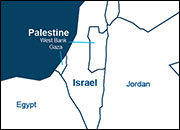
Mainly present in Palestine
Date formed
1974
Date listed
2003-02-12
Founder
Sabri al Banna alias Abu Nidal
Classification
Nationalist
Description
From the mid-1970s to the early 1990s, the Abu Nidal Organization (ANO) was one of the most feared transnational terrorist organizations in the world, killing or wounding about 900 persons in terrorist attacks in 20 countries.
Objectives
Destroy the State of Israel through armed struggle to liberate the people of Palestine.
Targets
United States, United Kingdom, France, Israel, moderate Palestinians and several Arab countries.
Also known as
Fatah Revolutionary Council, Revolutionary Council, Revolutionary Council of Fatah, Al-Fatah Revolutionary Council, Fatah-the Revolutionary Council, Black June, Arab Revolutionary Brigades, Revolutionary Organization of Socialist Muslims, Black September, Egyptian Revolution, Arab Fedayeen Cells, Palestine Revolutionary Council, Organization of Jund al Haq, Arab Revolutionary Council
Prominent attacks
- 1982: Attempted assassination of Israel's ambassador to the United Kingdom.
- 1985: Near simultaneous attacks on the Rome and Vienna airports.
- 1986: Attack on the Neve Shalom synagogue in Istanbul and the Pan Am Flight 73 hijacking in Karachi.
References
- Public Safety Canada - Abu Nidal Organization
- Federation of American Scientists (FAS) - Intelligence Resource Program - Abu Nidal Organization
- National Consortium for the Study of Terrorism and Response to Terrorism - Abu Nidal Organization
03. Abu Sayyaf Group (ASG)

Worn by Abu Sayyaf Group (ASG), the Shahada represents the Muslim profession of faith

Mainly present in the southern Philippines
Date formed
1991
Date listed
2003-12-02
Founder
Radical members of the Moro National Liberation Front under the leadership of Abdurajak Abubakar Janjalani
Classification
Nationalist/Separatist/Religious
Description
The Abu Sayyaf Group (ASG) is a militant, armed Islamist group based in the islands of the southern Philippines with links to Al Qaida and Jemaah Islamiyyah.
Objectives
Establish an Islamic state governed by Sharia law in the southern Philippines and expand its influence to Malaysia and Indonesia. In practice, the ASG primarily uses terrorism for profit.
Targets
Southern Philippines and neighbouring countries.
Also known as
Al Harakat Al Islamiyya (AHAI), Al Harakat-ul Al Islamiyya, Al- Harakatul-Islamia, Al Harakat Al Aslamiya, Abou Sayaf Armed Band (ASAB), Abu Sayaff Group, Abu Sayyef Group and Mujahideen Commando Freedom Fighters (MCFF)
Prominent attacks
Kidnap-for-ransom, guerrilla warfare, mass-casualty bombings and beheadings are particularly favoured tactics of the ASG.
- 2004: ASG claimed credit for planting a bomb on a passenger ferry and sinking the vessel, killing more than 100 people.
- 2005: Valentine's Day bombings in Manila, Davao and General Santos: 8 people killed and 150 injured.
References
- Public Safety Canada - Abu Sayyaf Group
- Federation of American Scientists Intelligence Resource Program - Abu Sayyaf Group
- National Consortium for the Study of Terrorism and Response to Terrorism - Abu Sayyaf Group
04. Al-Aqsa Martyrs' Brigade (AAMB)
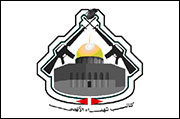
Logo of Al-Aqsa Martyrs' Brigade (AAMB)
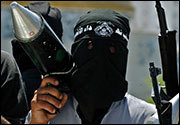
A Palestinian militant of the Al-Aqsa Martyrs' Brigade (AAMB)

Mainly present in Palestine
Date formed
2000
Date listed
2003-04-02
Founder
Coalition of Palestinian armed groups, the militant wing of Fatah
Classification
Nationalist
Description
The Al-Aqsa Martyrs' Brigade (AAMB) emerged at the outset of the 2,000 Palestinian al-Aqsa Intifada and consists of loose cells of Palestinian militants loyal to, but not under the direct control of, the secular-nationalist Fatah party.
Objectives
Expel Israeli presence from the West Bank and the Gaza Strip and establish an independent and sovereign Palestinian state.
Targets
Israeli military targets and Israeli settlers
Also known as
Al-Aqsa Intifada Martyrs' Group, Al-Aqsa Brigades, Martyrs of al-Aqsa group, Al-Aqsa Martyrs Battalion and Armed Militias of the Al-Aqsa Martyr Battalions
Prominent attacks
The AAMB has conducted armed, suicide and rocket attacks to achieve its objectives, including the first suicide bombing carried out by a female on January 27, 2002. The Al-Aqsa Martyrs' Brigade has also carried out several joint attacks with the Islamist groups Hamas and Palestinian Islamic Jihad.
- March 2, 2002: Beit Yisrael bombing, Jerusalem - 11 killed.
- January 5, 2003: Bombing at Southern Tel Aviv bus stop - 22 killed.
- January 29, 2004: Bombing at Rehavia, Jerusalem, bus line 19 - 11 killed.
- March 14, 2004: Bombing at Port of Ashdod - 10 killed.
References
- Public Safety Canada - Al-Aqsa Martyrs' Brigade
- Federation of American Scientists Intelligence Resource Program - Al-Aqsa Martyrs' Brigade
- National Consortium for the Study of Terrorism and Response to Terrorism - Al-Aqsa Martyrs' Brigade
05. Al-Gama'a al-Islamiyya (AGAI)

Omar Abdel Rahman, an Egyptian activist considered as the spiritual leader of Al-Gama'a al-Islamiyya (AGAI). He is commonly known as the "Blind Sheikh".

Mainly present in Egypt
Date formed
1970
Date listed
2002-07-23
Founder
Egyptian militant student group
Classification
Religious
Description
Al-Gama'a al-Islamiyya (AGAI) started in the early 1970s as an Islamist student movement on Egyptian campuses. By the late 1970s, the organization began to advocate change by force.
Objectives
Overthrow the Egyptian government and replace it with an Islamic state governed by Sharia law; attack American interests.
Targets
The police, government officials, informants, government sympathizers, foreign tourists and Coptic Christians.
Also known as
Islamic Group (IG)
Prominent attacks
- June 1995: Attempt on the life of Egyptian President Hosni Mubarak in Ethiopia.
- 1997: Worst terror attack in Egyptian history: 58 foreign tourists and 4 Egyptians killed at Luxor.
- From 1992 to 1997: Victims of AGAI campaign against the Egyptian state totaled more than 1,200.
References
- Public Safety Canada - Al-Gama'a al-Islamiyya
- Federation of American Scientists Intelligence Resource Program - Al-Gama'a al-Islamiyya
- National Consortium for the Study of Terrorism and Response to Terrorism - Al-Gama'a al-Islamiyya
06. Al-Ittihad Al-Islam (AIAI)
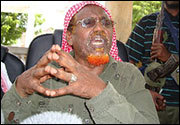
Sheikh Hassan Aweys, head of AIAI's military wing

Al-Ittihad Al-Islam (AIAI) fighters

Mainly present in Somalia and Ethiopia
Date formed
Late 1980s
Date listed
2002-07-23
Founder
Sheikh Ali Warsame supported by a Somali insurgent group who aimed to overthrow Somali dictator Siad Barre
Classification
Religious
Description
Al-Ittihad Al-Islam (AIAI) is a Somali extremist group. It has operated primarily in Somalia with a presence in Ethiopia, Kenya and Republic of Djibouti. AIAI rose to prominence following the collapse of the Barre regime in Somalia and is reported to have had links to Al Qaida.
Objectives
Form an Islamic state in Somalia and Somali-inhabited territories in the Horn of Africa.
Targets
The Somali government and Ethiopian security forces.
Also known as
N/A
Prominent attacks
To achieve its objective, AIAI has engaged in bombing, assassination attempts and the kidnapping and murder of aid workers.
- 1993: AIAI assisted Al Qaida in an attack against US soldiers during operation Restore Hope, leaving 18 dead.
- August 7, 1998: AIAI took part in the attacks against the US embassies in Nairobi, Kenya and Dar es Salam, Tanzania: 230 dead and 4,000 injured.
- November 30, 2002: Double attack against Israeli interests in Mogadishu, killed 15 people and injured 80.
- May 3, 2005: Members of AIAI and the Takfir Wal-Hijra group were believed to be responsible for the attack in a stadium in Mogadishu, killing 15 people and injuring 40.
References
- Public Safety Canada - Al-Ittihad Al-Islam
- Federation of American Scientists Intelligence Resource Program - Al-Ittihad Al-Islam
- National Consortium for the Study of Terrorism and Response to Terrorism - Al-Ittihad Al-Islam
07. Al-Muwaqi'un Bil Dima

Graffiti of Mokhtar Belmokhtar, founder

Mainly present in Mali and Libya
Date formed
December 2012
Date listed
2013-11-07
Founder
Mokhtar Belmokhtar
Classification
Religious
Description
Mokhtar Belmokhtar, a dissenting member of Al Qaida in the Islamic Maghreb (AQIM), created Al-Muwaqi'un Bil Dima (MBD) during the Malian war. The Jihadist movement was based in Gao, Mali.
In August 2013, the group merged with the Movement for Oneness and Jihad in West Africa (MOJWA) and became Al- Murabitoun. A MOJWA leader left the group during the merge and pledged allegiance to the Islamic State. Although he claimed to speak on behalf of the entire Al-Murabitoun organization, it became apparent that he represented only a splinter faction.
Objectives
Deter Western and African military intervention in northern Mali and imposing Sharia law in North and West Africa. Strengthen the rule of Sharia law in northern Mali.
Targets
All Western and African military presence in northern Mali and foreign workers in major industrial facilities. In addition to Western interests in North Africa, this group is engaged in a fight against the Islamic State terrorist group. In 2013, the Libyan section of IS posted a wanted notice against Mokhtar Belmokhtar.
Also known as
Al Mouaquioune bi addimaa, Katibat al-Muqaoon bil-Dumaa, al- Muwaqun Bi-Dima, Al-Muawaqqi'un bi 'l-Dima al-Mouwakoune bi- Dimaa, al-Mua'qi'oon Biddam, Those Who Sign With Blood, El Mouwakaoune Bidame, Those Who Have Signed Through Blood, the Signatories for Blood, the Signatories in Blood and Those Who Sign in Blood
Prominent attacks
January 16, 2013: Attack of the Tigantourine gas facility near In Amenas in eastern Algeria. MBD militants, using assault rifles, rocket-propelled grenades and anti-tank mines, took dozens of foreign and Algerian workers hostage that resulted in 67 dead. Two Canadian terrorists, Ali Medlej and Xristos Katsiroubas, were part of the group.
References
- Public Safety Canada - Al-Muwaqi'un Bil Dima
- The Long War Journal - Alleged statement from Mokhtar Belmokhtar denies his group swore allegiance to the Islamic State
08. Al-Murabitoun

Graffiti of Mokhtar Belmokhtar, founder
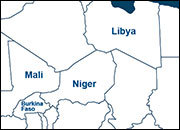
Mainly present in Mali, northern Niger, Burkina Faso and Libya
Date formed
August 2013
Date listed
2014-06-02
Founder
Mokhtar Belmokhtar
Classification
Religious
Description
Al-Murabitoun, an armed Salafist jihadist group based in West Africa, was established by the Movement for Oneness and Jihad in West Africa and Al-Muwaqi'un Bil Dima.
Objectives
Spread jihad across North Africa.
Targets
The group was formed to strengthen efforts against French military forces and interests in Mali.
Also know as
Mourabitounes, Al-Mourabitoun, Al-Morabitoune, Al- Mourabitoune and Les Almoravides
Prominent attacks
- January 16, 2013: Attack against the Tigantourine gas facility near In Amenas and hostage taking, leaving 67 dead, including two canadians, Xristos Katsiroubas et Ali Medlej.
- February 8, 2014: Five Malian aid workers were kidnapped near Gao, Mali.
- March 7, 2015: Two men opened fire in a bar in Bamako, Mali, killing 5 people.
- April 17, 2015: Suicide attack outside a UN base in Mali.
- November 20, 2015: Hostage taking at the Radisson Blu Hotel in Bamako, Mali, leaving 21 dead.
- January 15, 2016: Attack in Ouagadougou, in Burkina Faso, killing 29 people, including six Canadians on a humanitarian mission.
References
- Public Safety Canada - Al-Murabitoun
- Alleged statement from Mokhtar Belmokhtar denies his group swore allegiance to the Islamic State
- U.S. Department of State - Terrorist Designations of the Movement for Unity and Jihad in West Africa, Hamad el Khairy, and Ahmed el Tilemsi
- Who Are Al Mourabitoun? Al Qaeda-Linked Group Claims Responsibility For Mali Attack
09. Al Qaida

Founder of Al Qaida, Usama Bin Laden, deceased May 2011.

Al Qaida fighters

Al Qaida's Iraq frontman Abu Musab al-Zarqawi
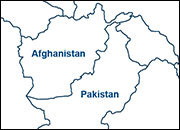
Mainly present in Afghanistan and Pakistan
Date formed
1988
Date listed
2002-07-23
Founder
Usama bin Laden
Classification
Religious
Description
Al Qaida serves as the strategic hub and driver for the global Islamist terrorist movement. In addition to its own members, Al Qaida's network includes groups operating in many countries throughout the world.
Ayman Al-Zawahiri took over after its historic leader Usama Bin Laden was killed in an American raid in Abbottabad, Pakistan.
Objectives
Unite Muslims to fight the United States and its allies, overthrow regimes it deems "non-Islamic" and expel Westerners and non-Muslims from Muslim countries. Al Qaida has forged ties and strategic control over other like-minded Islamist terrorist groups and provides encouragement and inspiration to other affiliated and aligned groups around the world.
Targets
The United States and all its allies.
Also known as
Al Jihad (AJ), Egyptian Islamic Jihad (EIJ), Vanguards of Conquest (VOC), The Islamic Army, Islamic Salvation Foundation, The Base, Group for the Preservation of the Holy Sites, Islamic Army for the Liberation of the Holy Places, World Islamic Front for Jihad Against Jews and Crusaders, Usama Bin Ladin Network, Usama Bin Ladin Organization and Qa'idat al-Jihad
Prominent attacks
Al Qaida activities include, but are not limited to, suicide attacks, simultaneous bombings, kidnappings and hijackings.
- 1993: First attack against the World Trade Center, leaving 6 people dead and 1,042 injured.
- 1998: Bombings of two American embassies in Kenya and Tanzania: 243 dead and nearly 4,500 injured.
- 2000: Bombing of the US Navy destroyer USS Cole in Yemen, killing 17 crew members and injuring 39.
- 2001: Attacks on the World Trade Center in New York and the Pentagon near Washington DC on September 11: 2,973 killed.
- 2004: Train bombings in suburban Madrid: close to 200 persons killed and 1,400 injured.
- 2009: Foiled plot to bomb the New York subway system.
References
- Public Safety Canada - Al Qaida
- National Counterterrorism Center - Al Qaida
- National Consortium for the Study of Terrorism and Response to Terrorism - Al Qaida
10. Al Qaida in the Arabian Peninsula (AQAP)
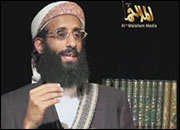
Anwar Al-Awlaki, a radical Yemeni-American cleric

Militants from Al Qaida in the Arabian Peninsula

Mainly present in the Arabian Peninsula
Date formed
January 2009
Date listed
2010-12-23
Founder
Abdulaziz al-Muqrin
Classification
Religious
Description
Al Qaida in the Arabian Peninsula (AQAP) is a Yemen-based affiliate of Al Qaida's (AQ) network. Its former leader Nasir Al- Wuhayshi was killed in June 2015 by an American drone.
Objectives
Cleanse the Arabian Peninsula of foreign influence – particularly Western military personnel and civilian contractors – and establish a single Islamic caliphate in place of the existing regimes in Yemen and Saudi Arabia.
Targets
American and Western interests in the Arabian Peninsula.
Also known as
Ansar al-Shari'a (AAS), Al Qaida of Jihad Organization in the Arabian Peninsula, Tanzim Qa'idat al-Jihad fi Jazirat al- Arab, Al-Qaida Organization in the Arabian Peninsula (AQAP), Al-Qaida in the South Arabian Peninsula and Al-Qaida in Yemen (AQY)
Prominent attacks
AQAP's most prominent attacks have been suicide bombings; however, the group has also engaged in guerrilla-style raids on military and police targets.
- December 25, 2009: AQAP was responsible for a failed attempt to detonate an explosive concealed by a Nigerien associate aboard a Northwest Airlines flight as the plane prepared to land in Detroit.
- January 2015: Saïd and Chérif Kouachi stormed the offices of Charlie Hebdo, a French satyrical newspaper, killing 12 people. It is believed that Saïd had received training in Yemen. The two brothers claimed they were acting in the name of AQAP.
Anwar Al-Awlaki, an American ideologist of yemeni origin linked to AQAP, has played an important role with the group. Being an extremely popular figure, he helped publicize AQAP's magazine, Inspire. This publication is used to spread the group's ideology and to provide tactical advice about weapons training and bomb-making. It is also a way for AQAP to claim attacks or congratulate those responsible for them, for instance the Boston Marathon bombing in 2013.
References
- Public Safety Canada - Al Qaida in the Arabian Peninsula
- National Counterterrorism Center - Al Qaida in the Arabian Peninsula
- National Consortium for the Study of Terrorism and Response to Terrorism - Al Qaida in the Arabian Peninsula
11. Al Qaida in the Islamic Maghreb (AQIM)

Logo of Al Qaida in the Islamic Maghreb (AQIM)

Abdelmalek Droukdel, founder of Al Qaida in the Islamic Maghreb (AQIM)

Present in Sahel and, to a lesser extent, in the Kabyle mountains (Algeria)
Date formed
1998
Date listed
2002-07-23
Founder
Abdelmalek Droukdel
Classification
Religious
Description
AQIM is a militant Sunni Islamist extremist group which originated as the Armed Islamic Group (AIG), an armed Islamist resistance movement to the secular Algerian government. In 1998, a splinter of the AIG declared its independence from the original group, believing the AIG's brutal tactics were hurting the Islamist cause and named itself Salafist Group for Call and Combat (GSPC). The GSPC pledged allegiance to Al Qaida in September 2006. In January 2007, the GSPC rebranded itself as Al Qaida in the Islamic Maghreb (AQIM). Al-Murabitoun's leader, Mokthar Belmokhtar, broke with AQIM in 2012 to start his own group (see Al-Muwaqi'un Bil Dima). AQIM is the most effective and largest extremist armed group inside Algeria. Since it pledged allegiance to Al Qaida, AQIM has also adopted a global jihad ideology.
Objectives
Create an Islamic state governed by Sharia law in Algeria.
Targets
All Algerian and Western state symbols inside and outside Algeria.
Also known as
Tanzim Qaedat bi-Bilad al-Maghrab al-Islami, Tanzim al-Qa´ida fi bilad al-Maghreb al-Islamiya, The Organization of Al-Qaida in the Islamic Maghreb, Al-Qa´ida Organisation in the Lands of the Islamic Maghreb, Al-Qa´ida in the Islamic Maghreb, Al-Qa´ida in the Lands of the Islamic Maghreb, al-Qaïda dans les pays du Maghreb islamique, Salafist Group for Call and Combat (GSPC), Groupe salafiste pour la prédication et le combat, the Salafist Group for Preaching and Combat
Prominent attacks
The group has maintained a high operational tempo since its emergence under the name of AQIM, employing conventional terrorist tactics in Algeria, including guerrilla-style ambushes and improvised explosive devices against military personnel and truck bombs against government targets. AQIM continues to kidnap Westerners and hold them for ransom in return for the release of imprisoned Islamic militants. AQIM also built a network for the purpose of sending North African militants to commit suicide bombings in Iraq.
- December 2008: Two Canadian diplomats, Robert Fowler and Louis Guay, were kidnapped in Niger. They were released in April 2009.
- January 22, 2009: Four European tourists were kidnapped near the border between Niger and Mali.
- January 8, 2011: Two French citizens, including one NGO member, were kidnapped in Niger. Both hostages died during an attempt by French forces to liberate them.
- 2012-2013: AQIM participated in the Malian war, which accounted for hundreds of deaths and hundreds of thousands of refugees.
- November 20, 2015: Attack at the Radisson Blu Hotel in Bamako, Mali, leaving 21 dead. This was a joint attack with the group Al-Murabitoun.
References
- Public Safety Canada – Al Qaida in the Islamic Maghreb
- National Counterterrorism Center - Al Qaida in the Islamic Maghreb
- National Consortium for the Study of Terrorism and Response to Terrorism - Al Qaida in the Islamic Maghreb
12. Al Shabaab
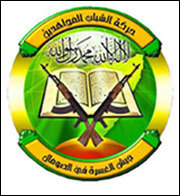
Logo of Al Shabaab

Hundreds of newly trained Al Shabaab fighters performing military exercises.

Mainly present in Somalia
Date formed
2006
Date listed
2010-03-05
Founder
Group formed as an offshoot of the Islamic Courts Union's most radical faction in Somalia
Classification
Religious/Political/Nationalist
Description
Al Shabaab is an organized but shifting Islamist group. It is currently the strongest, best organized, financed and armed military group in Somalia, controlling the largest stretch of territory in southern Somalia. The group is believed to be closely linked with Al Qaida.
Objectives
Implement Sharia law in Somalia, wage war against the enemies of Islam and remove all foreign forces and Western influence from Somalia.
Targets
The Somali government and its allies, including Kenya.
Also known as
Harakat Shabaab al Mujahidin, al Shabab, Shabaab, the Youth, Mujahidin al Shabaab Movement, Mujahideen Youth Movement, MYM, Mujahidin Youth, Hizbul Shabaab, Hisb'ul Shabaab, al-Shabaab al-Islamiya, Youth Wing, al Shabaab al- Islaam, al-Shabaab al-Jihad, the Unity of Islamic Youth, the Popular Resistance Movement in the Land of the Two Migrations
Prominent attacks
Al Shabaab has carried out suicide bombings and attacks using land mines and remote-controlled roadside bombs, as well as targeted assassinations against Ethiopian and Somali security forces, other government officials, journalists and civil society leaders. It has also carried out suicide bombings in Uganda in retaliation for the presence of Ugandan peacekeeping forces in Somalia. Since 2007, the group has committed nearly 550 acts of terrorism, killing 1,600 and injuring 2,100.
- July 11, 2010: Attacks in Kampala (Uganda) during the soccer World Cup final, killing at least 74.
- October 1st, 2011: A 66 year old disabled French woman was kidnapped by an armed gang, at her home on Manda Island, situated off the coast of Kenya. She died while in custody.
- October 4, 2011: A suicide bomber drived a truck carrying explosives into a government ministry in Mogadishu, Somalia, killing more than 70 people, including many students.
- October 24, 2011: A grenade exploded in a Nairobi, Kenya, dance club, injuring 14 people.
- April 14, 2013: Armed Al Shabaab militants carrying explosives attack Mogadishu's main Supreme Court. The suicide bombing resulted in 29 civilians killed and 58 injured. It is believed that a Canadian took part in this attack.
- September 21, 2013: Al Shabaab militants claim responsibility for an armed attack at the Westgate shopping mall in Nairobi, resulting in the deaths of at least 68 civilians.
- November 22, 2014: Execution of 28 non-Muslims out of 60 passengers in a bus in Kenya.
- April 2, 2015: Attack in a university in Kenya, killing 147 people.
References
- Public Safety Canada - Al Shabaab
- National Counterterrorism Center - Al Shabaab
- National Consortium for the Study of Terrorism and Response to Terrorism - Al Shabaab
13. Ansar al-Islam (AI)

Logo of Ansar al-Islam (AI)

Member of the Ansar al-Islam group standing guard

Mainly present in Iraq
Date formed
December 2001
Date listed
2004-05-17
Founder
Product of a merger between various Kurdish militant Islamist factions
Classification
Religious
Description
Ansar al-Islam (AI) is the product of a merger between various Kurdish Islamist factions and one of the most prominent anti- Coalition groups in Iraq. It maintains links to Al Qaida and is closely tied to Al Qaida in Iraq. AI promotes a radical interpretation of Islam and a strict application of Sharia law.
Objectives
Expel all foreign forces from Iraq, counter the growing influence of Iraq's Shia and secular Kurdish communities and establish an independent Iraqi state governed by Sharia law.
Targets
Shia communities, Kurdish authorities and the US military.
Also known as
The Partisans of Islam, Helpers of Islam, Supporters of Islam, Soldiers of God, Kurdistan Taliban, Soldiers of Islam, Kurdistan Supporters of Islam, Supporters of Islam in Kurdistan, Followers of Islam in Kurdistan, Ansar al-Sunna
Prominent attacks
- 2002: Failed attempt to assassinate the Prime Minister of the Patriotic Union of Kurdistan.
- 2004: Double suicide bombing on the respective headquarters of two Kurdish political parties that killed more than 60 people and wounded over 200 others.
AI is also well-known for kidnapping and executing foreign hostages, often beheading their victims and posting video of the act on the Internet.
References
- Public Safety Canada - Ansar al-Islam
- Federation of American Scientists Intelligence Resource Program - Ansar al-Islam
- National Consortium for the Study of Terrorism and Response to Terrorism - Ansar al-Islam
14. Armed Islamic Group (AIG)

Logo of the Armed Islamic Group

An Algerian woman whose two sons were killed by the Armed Islamic Group (AIG). She holds a panel featuring the pictures of all the victims of this terrorist group.

Mainly present in Algeria
Date formed
1992
Date listed
2002-07-23
Founder
Abdelhak Layada
Classification
Religious
Description
The Armed Islamic Group (AIG) is a radical Islamist group based in Algeria. The AIG has been dormant since approximately 2005.
Objectives
Overthrow the Algerian government and replace it with an Islamic state.
Targets
The AIG is known to have targeted intellectuals, journalists, foreigners, both within and outside Algeria, as well as government employees.
Also known as
N/A
Prominent attacks
The group employs a variety of methods and tactics in its attacks, including bombings, shootings, hijackings and kidnappings.
- Since 1993: The AIG has killed more than 100 expatriates in Algeria, predominantly Europeans.
- From 1993 to 1998: About 70,000 civilians were killed in raids throughout the country.
- December 1994: The AIG hijacked an Air France Flight from Algiers to Paris.
References
- Public Safety Canada - Armed Islamic Group
- Federation of American Scientists (FAS) - Intelligence Resource Program - Armed Islamic Group
- National Consortium for the Study of Terrorism and Response to Terrorism - Armed Islamic Group
15. Asbat Al-Ansar (AAA) ("The League of Partisans")

Sheikh Abu Sharif Akl, spokesperson of Asbat Al-Ansar (AAA)

Mainly present in Lebanon
Date formed
Late 1980s, early 1990s
Date listed
2002-11-27
Founder
Sheikh Hisham Shreidi
Classification
Religious
Description
Asbat Al-Ansar (AAA) is a (Sunni) Lebanese Islamist extremist group linked to Al Qaida and other Sunni extremist groups. The group bases its ideology on Salafism, a branch of Islam whose adherents believe in a pure interpretation of the Koran and Islamic law.
Objectives
Promote the establishment of an Islamic state in Lebanon.
Targets
Christian, secular and Shia institutions in the country. Past targets have included the Lebanese state, as well as elements within the country AAA considers un-Islamic. The group is opposed to Israel and the Western World.
Also known as
Osbat Al Ansar, Usbat Al Ansar, Esbat Al-Ansar, Isbat Al Ansar, Usbat-ul-Ansar, Band of Helpers, Band of Partisans, League of the Followers
Prominent attacks
Mid-1990s: Bombings of nightclubs, theaters and liquor stores.
- 1999: Two AAA members attacked a Sidon court and killed four people.
- 2000: AAA involved in two plots to assassinate the US Ambassador to Lebanon.
Since at least 2005, AAA has been sending recruits into Iraq to fight against Coalition forces.
References
- Public Safety Canada - Asbat Al-Ansar
- Federation of American Scientists Intelligence Resource Program - Asbat Al-Ansar
- National Consortium for the Study of Terrorism and Response to Terrorism - Asbat Al-Ansar
16. Aum Shinrikyo (AUM)

Logo of Aum Shinrikyo
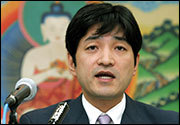
Fumihiro Joyu, leader of Aum Shinrikyo

Victim of the nerve gas attack by the Aum Shinrikyo.

Mainly present in Japan
Date formed
1987
Date listed
2002-12-10
Founder
Shoko Asahara, a charismatic Japanese guru
Classification
Religious
Description
Formed in Japan in 1987 by Chizuo Matsumoto alias Shoko Asahara, Aum Shinrikyo (AUM) is a religious organization with a belief system that mixes various religions – primarily Buddhism – with science fiction and the prophecies of Nostradamus. Originally peaceful in nature, the group became increasingly dangerous and violent, seeking to actively bring about Armageddon. The group claimed that the United States would initiate Armageddon by starting World War III with Japan. The founder of the sect was sentenced to the death penalty in 2004 for the 1995 attack. The sentence was confirmed by the Supreme Court of Japan in May 2015. On January 18, 2000, the sect changed its image and replaced AUM with "Aleph".
Objectives
Control Japan, then the world and subsequently create a global utopian society.
Targets
Japan and the entire world
Also known as
Aum Shinri Kyo, Aum, Aum Supreme Truth, A. I. C. Comprehensive Research Institute, A. I. C. Sogo Kenkyusho and Aleph
Prominent attacks
- 1994: AUM committed its first sarin attack against Japanese civilians by releasing the nerve agent in Matsumoto, killing seven people and wounding more than a hundred others.
- 1995: AUM released sarin in the Tokyo subway system, killing a dozen people and wounding thousands more.
References
- Public Safety Canada - Aum Shinrikyo
- Federation of American Scientists Intelligence Resource Program - Aum Shinrikyo
17. Autodefensas Unidas de Colombia (AUC)
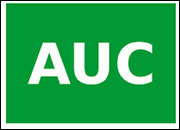
Logo of Autodefensas Unidas de Colombia (AUC)

Flag of the Autodefensas Unidas de Colombia

A paramilitary fighter of Autodefensas Unidas de Colombia (AUC) kisses his rifle during a ceremony.

Mainly present in Colombia
Date formed
April 1997
Date listed
2003-04-02
Founder
Carlos Castano
Classification
Nationalist/Separatist/ Right-Wing
Description
The Autodefensas Unidas de Colombia (AUC) is a right-wing terrorist organization in Colombia which acts as an umbrella organization for like-minded paramilitary groups. Guided by its objective of countering the influence and activity of leftwing guerrilla organizations, the AUC has come into conflict with rival terrorist groups from the Ejército de Liberación Nacional (ELN) and the Fuerzas Armadas Revolucionarias de Colombia (FARC). At first, the confederation of local militias was funded by large land owners. The AUC is closely linked to the drug trade as the revenue from illegal narcotics smuggling is integral to its operations.
Objectives
Protect the economic interests of citizens and of the state from the Communist-inspired guerrilla movements.
Targets
Also known as
Columbian United Self-Defense Groups, Autodéfenses unies de Colombie and United Self-Defense Forces of Colombia
Prominent attacks
In order to achieve its goals, the AUC has employed a variety of tactics, including assassinations, intimidation, torture and kidnapping. The group has massacred civilians in villages believed to support the guerrilla.
- July 15/20, 1997: Mapiripán massacre, in which 39 people were allegedly killed. Several members of the military, including a colonel and a general, received the maximum sentence of forty years in jail for their involvement.
- February 16/19, 2000: El Salado massacre, in which more than 100 people were allegedly killed.
- October 14, 2000: Macayepo massacre, in which fifteen peasants were killed.
- February 2005: San José de Apartadó massacre, in which eight residents of the community, including two FARC militia members, women and children, were killed.
References
- Public Safety Canada - AUC
- Federation of American Scientists Intelligence Resource Program - Autodefensas Unidas de Colombia
- National Consortium for the Study of Terrorism and Response to Terrorism - Autodefensas Unidas de Colombia
18. Babbar Khalsa International (BKI)

Logo of Babbar Khalsa International (BKI)
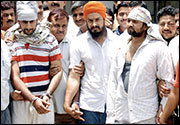
Members of the Babbar Khalsa International (BKI), accused in the Delhi cinema hall bomb blasts.

Mainly present in India
Date formed
Spring 1978
Date listed
2003-06-18
Founder
Talwinder Singh Parmar and Jathedar Sukhdev Singh Babbar. The group was formed in the wake of bloody clashes between Sikh rival groups on April 13, 1978
Classification
Nationalist/Separatist
Description
Babbar Khalsa International (BKI) is a Sikh terrorist entity that has members in Pakistan, North America, Europe and Scandinavia. One of the founders, Jathedar Sukhdev Singh Babbar, of Indian origin, was a naturalized Canadian. He went back to India where he was murdered in 1992.
Objectives
Establish a fundamentalist independent Sikh state called Khalistan (Land of the Pure) in what is presently the Indian state of Punjab.
Targets
Sikhs, Hindus, as well as Indian facilities
Also known as
Babbar Khalsa
Prominent attacks
BKI is believed to be responsible for hundreds of attacks against Indian security forces and civilians. BKI activities include armed attacks, assassinations and bombings.
- June 23, 1985: Bombing of flight 182 of Air India, Boeing 747, above Ireland, killing 329 including 268 Canadians. This is the worst attack ever against Canadians.
- May 30, 1986: Five BKI members arrested in Montréal for conspiracy to bomb an Air India flight.
- August 31, 1995: A BKI member commited a suicide bombing, also killing the Prime Minister of Punjab (northwestern Indian state).
- July 2010: Four BKI members arrested for the murder of a Sikh leader in Punjab.
References
- Public Safety Canada – Babbar Khalsa International
- Federation of American Scientists Intelligence Resource Program - Babbar Khalsa International
- National Consortium for the Study of Terrorism and Response to Terrorism - Babbar Khalsa International
19. Boko Haram
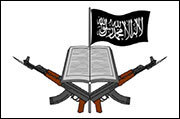
Logo of Boko Haram

Mainly present in Nigeria, Cameroon, Chad and Niger
Date formed
2002
Date listed
2013-12-24
Founder
Mohammed Yusuf
Classification
Religious
Description
Boko Haram is a Salafist jihadist group operating in northern Nigeria. The group desires a political system in Nigeria modeled after how the Taliban ruled in Afghanistan. Boko Haram is suspected of recruiting and training child soldiers. The name "Boko Haram" means "Western education is sin". In March 2015, the group pledged allegiance to the Islamic State and changed its name to Wilayat Al-Sudan Al-Gharbi (West Africa province).
Objectives
Overthrow the Nigerien government and implement an Islamic state in northern Nigeria.
Targets
Christian civilians, the Nigerien government, police forces, tourists, the media and schools
Also known as
Jama'atu Ahlis Sunna Lidda'awati Wal-Jihad (People of the Tradition of the Prophet for Preaching and Striving/Group Committed to Propagating the Prophet's Teachings and Jihad)
Prominent attacks
The group's operations include assassinations of political and religious officials, small arms attacks, improvised explosive devices and suicide bombings.
- From 2010 to 2012: Boko Haram carried out more than 300 attacks, which killed 1,000 people.
- August 2011: Suicide bomb attack against the United Nations compound in Abuja, Nigeria, killing 23 and injuring more than 80 people.
- September 29, 2013: Attack at the College of Agriculture in Gujba: 40 students killed.
- February 16, 2014: Izghe, Nigeria massacre: 106 villagers killed.
- April 15, 2014: More than 200 students kidnapped from a girls' school in Chibok, in northeast Nigeria.
References
20. Caucasus Emirate

Flag of the Caucasus Emirate

Founder Dokku Umarov

Ali Taziev (front), also known as Magas, a suspected rebel of the Caucasus Emirate.

Mainly present in North Caucasus
Date formed
2007
Date listed
2013-12-24
Founder
Dokku Umarov
Classification
Separatist/Religious
Description
The Chechen Republic of Ichkeria declared its independence from the Soviet Union in October 1991. In its initial stages, the Republic of Ichkeria focused on the independence of Chechnya, but with time the rebellion became more Islamist. On October 31, 2007 the President of Ichkeria Dokka Umarov proclaimed an Emirate in the Caucasus with the objective of imposing Sharia law in North Caucasus. The group adopted a territorial division model based on the one used by AIG/AQIM, that is a territorial division by Wilaya (administrative territory), which is also found in Sahel.
Each Wilaya is ruled by an emir chosen by the Majlis al-choura (Advisory Council). The Islamic Emirate of the Caucasus is composed of the following Wilayas:
- Daghestan;
- Nokhchiyko (Chechnya);
- Kabardino - Balkaria;
- Ghalghaycho (Ingushetia and North Ossetia);
- Nogai Steppes.
Objectives
Expel Russians from the North Caucasus republics, overthrow the secular governments in the North Caucasus republics and establish an Islamic emirate governed under Sharia law.
Targets
Russian civilians and officials
Also known as
Imarat Kavkaz and Islamic Emirate of the Caucasus
Prominent attacks
The Caucasus Emirate has carried out terrorist activities in Russia and the North Caucasus republics that range from ambushes with small arms, targeted assassinations using snipers, improvised explosive devices and suicide bombings. Since its formation, the network has carried out almost daily attacks throughout the North Caucasus republics and within Russia itself, resulting in the death and injury of many citizens and security personnel.
- March 29, 2010: Suicide bombings perpetrated by two women in the Moscow subway: 39 killed and over 100 injured.
- January 24, 2011: Suicide bombing committed in the busiest arrivals concourse at the Moscow airport: 37 killed and 180 injured.
- July 2013: Video message released by Dokku Umarov calling for attacks on the Sochi Winter Olympics.
References
- Public Safety Canada – Caucasus Emirate
- Integrated Criminal Intelligence Unit (ICIU). Émirat du Caucase, Royal Canadian Mounted Police (July 2013).
21. Ejército de Liberación Nacional (ELN)

Flag of the Ejército de Liberación Nacional (ELN)

Logo of the Ejército de Liberación Nacional (ELN)

Colombian soldiers escort alleged urban rebels of the Ejército de Liberación Nacional (ELN).

Mainly present in Colombia
Date formed
1964
Date listed
2003-04-02
Founder
Two distinct groups of Christians and Marxists joining together. The group is inspired by Fidel Castro and Che Guevara
Classification
Communist/Socialist
Description
The Ejército de Liberación Nacional (ELN) is the second largest leftist rebel group in Colombia after the Fuerzas Armadas Revolucionarias de Colombia (FARC). The group believes foreign involvement in Colombia's oil industry violates the country's sovereignty and foreign companies are unfairly exploiting Colombia's natural resources.
Objectives
Seize power for the people and establish a revolutionary government.
Targets
The Colombian oil industry, political figures and foreign workers in Colombia.
Also known as
National Liberation Army and the Army of National Liberation
Prominent attacks
ELN activities include kidnapping, hijacking, bombing, extortion and guerrilla warfare. In its attacks, the ELN primarily targets the Colombian oil industry, events and political figures. The group annually conducts hundreds of kidnappings for ransom.
References
- Public Safety Canada – Ejército de Liberación Nacional
- Federation of American Scientists Intelligence Resource Program - Ejército de Liberación Nacional
- National Consortium for the Study of Terrorism and Response to Terrorism - Ejército de Liberación Nacional
22. Euskadi Ta Askatasuna (ETA)

Logo of Euskadi Ta Askatasuna (ETA)

Banner in favour of pro-independence armed Basque group ETA reading in Basque: "Fight is the way".

Mainly present in Spain and France
Date formed
1959
Date listed
2003-04-02
Founder
Product of a merger between members of the Ekin (Action) underground magazine and dissenting members of the Basque Nationalist Party
Classification
Marxist/Socialist/ Nationalist/Separatist
Description
The Euskadi Ta Askatasuna (ETA) is headquartered in the Basque provinces of Spain and France. ETA has evolved from a group promoting traditional Basque culture to the most powerful of the Basque terrorist groups.
After being denied participation in the elections, being harassed by the police and the justice system and having most of its members thrown in prison, the group decided in 2011 to cease its armed activity definitively, thereby declaring a permanent ceasefire, but without disarming the group.
Objective
Create an independent Basque state that would contain the six Basque provinces of Spain and France, as well as the Navarra province of Spain.
Targets
Spanish and French interests domestically and abroad, Spanish Government officials, security and military forces, politicians and judicial figures
Also known as
Basque Homeland and Liberty, Euzkadi Ta Azkatasuna, Euzkadi Ta Askatasuna, Basque Nation and Liberty, Basque Fatherland and Liberty and Basque Homeland and Freedom
Prominent attacks
ETA activities include bombings, assassinations and kidnappings. The ETA is said to have killed over 800 people and carried out some 1,600 terrorist attacks since its formation.
References
- Public Safety Canada – Euskadi Ta Askatasuna
- Federation of American Scientists Intelligence Resource Program - Euskadi Ta Askatasuna
- National Consortium for the Study of Terrorism and Response to Terrorism - Euskadi Ta Askatasuna
23. Fuerzas Armadas Revolucionarias de Colombia (FARC)

Logo of Fuerzas Armadas Revolucionarias de Colombia (FARC)

A member of las Fuerzas Armadas Revolucionarias de Colombia (FARC)

A Revolutionary FARC rebel stands guard on a hill before the release of two hostages in Colombia.

Mainly present in Colombia
Date formed
1964
Date listed
2003-04-02
Founder
Colombian Communist Party
Classification
Communist/Socialist
Description
The Fuerzas Armadas Revolucionarias de Colombia (FARC) is Colombia's oldest, largest and best-equipped leftist insurgency group. The FARC is known for drug trafficking and many kidnappings of foreigners. Both FARC and the Ejército de Liberación Nacional (ELN) are members of the Simon Bolivar Guerrilla Coordination Board.
Objectives
Overthrow the current government in Colombia and replace it with a leftist, anti-American regime that would force all United States interests out of Colombia and Latin America.
Targets
Colombian political, military and economic figures, and foreign citizens kidnapped for ransom.
Also known as
Revolutionary Armed Forces of Colombia, Revolutionary Armed Forces of Colombia-People's Army (Fuerzas Armadas Revolucionarias de Colombia-Ejército del Pueblo, FARC-EP), National Finance Commission (Comisión Nacional de Finanzas) and Coordinadora Nacional Guerrillera Simon Bolivar (CNGSB)
Prominent attacks
FARC activities include bombings, hijackings, assassinations and the kidnapping of Colombian officials and Westerners.
- February 23, 2002: Kidnapping of Ingrid Betancourt, who was rescued 6 and a half years later by Colombian security forces in a high-profile operation.
- 2012: 239 attacks on the energy infrastructure.
References
- Public Safety Canada – FARC
- Federation of American Scientists (FAS) - Intelligence Resource Program - FARC
- National Consortium for the Study of Terrorism and Response to Terrorism - FARC
24. Gulbuddin Hekmatyar

Gulbuddin Hekmatyar, founder of the group Hezb-e Islami Gulbuddin (HIG)

Mainly present in Afghanistan
Date formed
—
Date listed
2005-05-24
Founder
Gulbuddin Hekmatyar, former Afghanistan Prime Minister
Classification
Religious
Description
Gulbuddin Hekmatyar is the leader of the political party Hezbe Islami Gulbuddin (HIG). He served as Afghanistan's prime minister from 1993 to 1994. He espouses an extreme Islamist anti-Western ideology. Hekmatyar has declared his intention to wage jihad against foreign troops and interests in Afghanistan until all occupation forces are driven out. In 2006, Hekmatyar pledged allegiance to Al Qaida leader Usama Bin Laden and vowed to join Al Qaida's holy war.
Objectives
Overthrow the Afghani administration and create an Islamic state.
Targets
Afghani administration and authorities, foreign and Western interests in Afghanistan.
Also known as
Gulabudin Hekmatyar, Gulbuddin Khekmatiyar, Gulbuddin Hekmatiar, Gulbuddin Hekmartyar, Gulbudin Hekmetyar, Golboddin Hikmetyar and Gulbuddin Hekmetyar
Prominent attacks
Gulbuddin Hekmatyar has perpetrated indiscriminate attacks against civilians, government officials and foreign officers.
References
25. Gulbuddin Hekmatyar's faction of the Hezb-e Islami, Hezb-e Islami Gulbuddin (HIG)
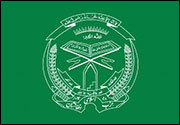
Logo of Hezb-e Islami

Gulbuddin Hekmatyar, founder of Hezb-e Islami Gulbuddin (HIG)

Mainly present in Afghanistan
Date formed
1977
Date listed
2006-10-23
Founder
Gulbuddin Hekmatyar, former Afghanistan Prime Minister
Classification
Religious
Description
Gulbuddin Hekmatyar's faction of the Hezb-e Islami, Hezb-e Islami Gulbuddin (HIG), espouses a radical Islamist anti- Western ideology. Hekmatyar's men were reputed to be the most effective mujahideen group to fight against the Soviet occupation and the most extreme of all Afghan fighters. Drawing support from Pakistan, HIG now has a presence in much of Afghanistan and is an important component of resistance forces in the country. HIG is known to cooperate with Al Qaida and the Taliban.
Objectives
Overthrow the Afghan government, eliminate all Western influence in Afghanistan and create an Islamic state.
Targets
The United States, its coalition partners, the Afghan Transitional Administration, the personnel and facilities of the United Nations and NGOs
Also known as
N/A
Prominent attacks
HIG has a history of engaging in terrorist activities including bombings, suicide bombings, armed attacks, killings, torture and kidnappings. HIG often targets civilians, journalists, foreign aid workers and Afghan or foreign officials.
References
- Federation of American Scientists Intelligence Resource Program - HIG
- National Counterterrorism Center - HIG
- Public Safety Canada – HIG
26. Hamas (Harakat Al-Muqawama Al-Islamiya) ("Islamic Resistence Movement")
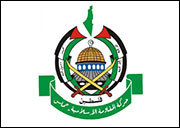
Logo of Hamas

Sheikh Ahmed Yassin, founder
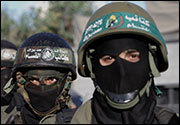
Fighters from Ezzedine Al-Qassam Brigades, the armed wing of the Hamas movement
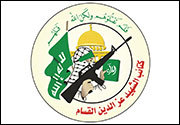
Emblem of the Ezzedine Al-Qassam Brigades

Mainly present in the Gaza Strip and the West Bank
Date formed
Late 1987, during the first Intifada
Date listed
2002-11-27
Founder
Sheikh Ahmed Yassin
Classification
Nationalist/Religious
Description
Hamas, the Arabic acronym for the group Harakat Al-Muqawama Al-Islamiya, is a radical Islamist-nationalist terrorist organization. It uses political and violent means to pursue its goal. In November 1993, Oslo Accords were signed between Israel and the Palestinian Authority under the auspices of the defunct President Yasser Arafat. HAMAS rejected these agreements and became a radical organisation, forming an armed wing named the Ezzedine Al-Qassam Brigades (which in fact was created in June 1991), after the man considered as being the father of Palestinian resistance.
Hamas has been one of the primary groups involved in suicide bombings aimed at Israelis since the start of the Al-Aqsa Intifada in September 2000. In 2006, Hamas participated in and won Palestinian parliamentary elections, leading to negotiations between the group and the Palestinian Authority over the establishment of a unity government. In 2007, however, Hamas overthrew the Palestinian Authority in the Gaza Strip and seized power of the coastal territory. Although the group's political leadership resides in Damascus, Hamas uses the Gaza Strip as a base for terrorist operations aimed against Israel.
Objectives
Establish an Islamic Palestinian state and base its constitution on the Koran. Combat the enemy through jihad to free Palestine.
Targets
Israeli administration and interests, Israeli civilians and military
Also known as
N/A
Prominent attacks
Hamas uses various means to reach its goals, such as homemade Al-Qassam rockets, suicide-bombings and kidnappings.
- Since 1990: Hamas has been responsible for several hundred terrorist attacks against both civilian and military targets.
- 2000-2004: Hamas conducted 425 attacks, killing nearly 400 Israelis and wounding more than 2,000.
- 2001-2008: Hamas launched more than 3,000 rockets and 2,500 mortar attacks into Israel.
- June 25, 2006: Soldier Gilad Shalit was captured. The Israeli army launched Operation "Summer Rain" to mount an incursion into the Palestinian territory to free Shalit. The operation failed. Finally, on October 18, 2011 after 1,941 days in captivity, Shalit was returned to Israel. The Israeli government agreed to exchange Shalit for over 1,000 Palestinian prisoners, including 280 who had been sentenced to life for attacks that killed close to 600 Israeli civilians.
References
- Public Safety Canada - Hamas
- Federation of American Scientists (FAS) - Intelligence Resource Program - Hamas
- National Counterterrorism Center - Hamas
- Integrated Criminal Intelligence Unit (ICIU). Hamas – Brigades Ezzedine al-Kassam, Royal Canadian Mounted Police (April 2014).
- National Consortium for the Study of Terrorism and Response to Terrorism - Hamas
27. Haqqani Network

Insurgents suspected of being from the Haqqani Network.

Mainly present in Afghanistan
Date formed
Mid-1970s
Date listed
2013-05-09
Founder
Djalalouddin Haqqani
Classification
Religious/Nationalist
Description
The Haqqani Network is an Afghan and Pakistani insurgent group described as one of the most powerful and violent organizations in the region. It poses a significant local threat to Afghan and coalition forces, as well as to civilians in its area of operations. The Haqqani Network has been responsible for many of the highest-profile attacks in Afghanistan. Currently, the attacks committed by the Haqqani Network create doubts about the ability of Afghan forces to protect its civilians without North Atlantic Treaty Organization (NATO) support.
Objectives
Seek the withdrawal of all foreign forces from Afghanistan, re-establish the Islamic Emirate of Afghanistan through the overthrow of the Karzai administration, control the security environment in Afghanistan and cultivate the global Jihadist movement.
Targets
Afghan authorities, civilians and foreign forces
Also known as
N/A
Prominent attacks
The Haqqani Network was the first group to adopt the use of suicide bombers for attacks in Afghanistan. The Haqqani Network specializes in coordinated attacks, using large vehicle-borne improvised explosive devices (IEDs), suicide vests and swarming attacks. It has carried out a series of tactically sophisticated complex attacks, often directly assaulting coalition facilities.
References
28. Harakat ul-Mudjahidin (HuM)

Flag of Harakat ul-Mudjahidin (HuM)
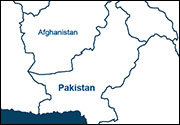
Mainly present in Pakistan
Date formed
1985
Date listed
2002-11-27
Founder
Breakaway faction of Harkat-ul-Jihadal- Islami (HuJI), an anti-Soviet Islamic group
Classification
Nationalist/Separatist/ Religious
Description
Harakat ul-Mujahidin (HuM) is a Pakistan-based radical Kashmiri Islamist organization founded to fight Soviet occupation in Afghanistan. The group has links with Al Qaida, and is also a signatory to the Al Qaida-issued 1998 fatwa (religious decree) against the United States and Israel. Initially the HuM's objective was the organization of humanitarian relief for the Afghan refugees in Pakistan.
Objectives
Since the end of the war in Afghanistan, the organization has sought Pakistani rule for the Indian territory of Kashmir and also calls for jihad against America and India.
Targets
The West, India, anti-Muslim governments and all nonbelievers
Also known as
Al-Faran, Al-Hadid, Al-Hadith, Harkat-ul-Mujahideen, Harakat ul- Mujahideen, Harakat al- Mujahideen, Harkat-ul-Ansar, Harakat ul- Ansar, Harakat al-Ansar, Harkat-ul-Jehad-e-Islami, Harkat Mujahideen, Harakat-ul-Mujahideen al-Almi, Holy Warriors Movement, Movement of the Mujahideen, Movement of the Helpers, Movement of Islamic Fighters, Al Qanoon, Jamiat ul-Ansar
Prominent attacks
HuM employs various methods that include hijacking as well as kidnapping and executing foreigners and Indian government officials. HuM was involved in several armed altercations with the Kashmir armed forces, leaving many victims.
- July 1995: Five Western tourists kidnapped in Kashmir and later killed.
- December 24, 1999: Hijacking of an Air India Airbus A300 with 160 passengers on board. Ensuing negotiations led to the release by Indian authorities of two major leaders of the organization.
- 2002: Execution of American journalist Daniel Pearl.
References
- Public Safety Canada - HuM
- Federation of American Scientists (FAS) - Intelligence Resource Program - Harakat ul-Mujahidin
- National Consortium for the Study of Terrorism and Response to Terrorism - Harakat ul-Mujahidin
29. Hizballah

Logo of Hizballah

A portrait of Hassan Nasrallah, chief of Hizballah

Mainly present in Lebanon
Date formed
1982
Date listed
2002-12-10
Founder
Group formed as an offshoot of a Shia political movement in Lebanon
Classification
Nationalist/Religious
Description
Hizballah is a radical Shia group ideologically inspired by the Iranian revolution. Formed in response to Israel's invasion of Lebanon, Hizballah is one of the most technically capable terrorist groups in the world. While the other Lebanese militias disarmed at the end of Lebanon's civil war in 1990, Hizballah continued to fight, waging guerrilla warfare against Israeli troops stationed in southern Lebanon. Following Israel's withdrawal from Lebanon in 2000, Hizballah attacks against Israeli forces continued, concentrated on the disputed Shebaa Farms area.
Objectives
Liberate Jerusalem, destroy Israel and, ultimately, establish a revolutionary Shia Islamic state in Lebanon, modelled after Iran.
Targets
Israel and its allies
Also known as
Hizbullah, Hizbollah, Hezbollah, Hezballah, Hizbullah, The Party of God, Islamic Jihad (Islamic Holy War), Islamic Jihad Organization, Islamic Resistance, Islamic Jihad for the Liberation of Palestine, Ansar al-Allah (Followers of God/ Partisans of God/God's Helpers), Ansarollah (Followers of God/Partisans of God/God's Helpers), Ansar Allah (Followers of God/Partisans of God/God's Helpers), Al-Muqawamah al- Islamiyyah (Islamic Resistance), Organization of the Oppressed, Organization of the Oppressed on Earth, Revolutionary Justice Organization, Organization of Right Against Wrong and Followers of the Prophet Muhammed
Prominent attacks
Hizballah has carried out some of the most infamous terror attacks of the Lebanese civil war, including:
- October 23, 1983: The suicide bombings of the barracks of United States Marines and French paratroopers in Beirut, killing 241 American marines and 58 French paratroopers.
- June 14, 1985: The hijacking of the Trans World Airlines (TWA) Flight 847, resulting in the death of a US Navy diver and 39 Americans held hostage over a three-week period.
- July 12, 2006: Hizballah kidnapped two Israeli soldiers and killed eight others provoking a war that lasted 34 days.
- July 18, 2012: A tourist bus is the target of a suicide attack at the Burgas airport, in Bulgaria. National authorities have confirmed that Hizballah is responsible. One of the main suspects is a Lebanese-Canadian man.
References
- Public Safety Canada - Hizballah
- National Counterterrorism Center - Hizballah
- Federation of American Scientists (FAS) - Intelligence Resource Program - Hizballah
- National Consortium for the Study of Terrorism and Response to Terrorism - Hizballah
30. International Relief Fund for the Afflicted and Needy – Canada (IRFAN)
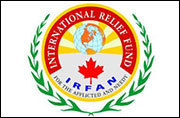
Logo of the International Relief Fund for the Afflicted and Needy – Canada (IRFAN)

Mainly present in Canada
Date formed
2007
Date listed
2014-04-24
Founder
Unknown
Classification
Charitable organization, Religious
Description
International Relief Fund for the Afflicted and Needy – Canada (IRFAN) is a not-for-profit organization operating in Canada. Between 2005 and 2009, IRFAN-Canada transferred approximately $14.6 million worth of resources to various organizations with links to Hamas.
Objectives
Humanitarian assistance to Palestinians in West Bank and Gaza. Fundraising in support of populations in need or affected by natural disasters.
Also known as
International Relief Fund for the Afflicted and Needy, International Relief Fund for the Afflicted and Needy (Canada), IRFAN, IRFAN – Canada, IRFAN Society
References
31. International Sikh Youth Federation (ISYF)

Logo of the International Sikh Youth Federation (ISYF)

Leaders of International Sikh Youth Federation

Mainly present in India
Date formed
1984
Date listed
2003-06-18
Founder
The All India Sikh Student Federation (AISSF), a group of Sikh students in the United Kingdom
Classification
Nationalist/Separatist/ Religious
Description
The International Sikh Youth Federation (ISYF) is a Sikh organization that was founded in 1984 in the United Kingdom as an international branch of the All India Sikh Students' Federation (AISSF), with centres in several countries, including Canada. The ISYF collaborates and/or associates with a number of Sikh terrorist organizations, including Babbar Khalsa.
Objectives
Liberate the Sikh nation and establish an independent Sikh state called Khalistan.
Targets
Indian political figures and moderate members of the Sikh community
Also known as
N/A
Prominent attacks
Since 1984, its members have been engaged in terrorist attacks, assassinations and bombings.
References
32. Islamic Army of Aden (IAA)

Head of the Islamic Army of Aden, Abu Bakr al-Mehdar alias Abu Hassan

Mainly present in Yemen
Date formed
1994
Date listed
2002-11-27
Founder
Qassem al-Rimi
Classification
Religious
Description
The Islamic Army of Aden (IAA) is a Yemen-based organization that emerged publicly in mid-1998 when the group released a series of communiques that expressed support for Usama Bin Laden and appealed for the overthrow of the Yemeni government and operations against US and other Western interests in Yemen. Combatting Western influences both in Yemen and in the wider Islamic world, the IAA opposes the use of Yemeni ports and bases by the United States and other Western countries. It has also called for the expulsion of Western forces from the Gulf of Aden. The IAA has links to other terrorist groups, including Al Qaida.
Objectives
Overthrow of the Yemeni government and create an Islamist theocracy.
Targets
Yemeni government, American and foreign interests in Yemen
Also known as
Islamic Army of Aden-Abyan (IAAA), the Aden-Abyan Islamic Army (AAIA), Aden Islamic Army, Islamic Aden Army, Muhammed's Army/ Army of Mohammed and the Jaish Adan Al Islami
Prominent attacks
Guided by these goals, the IAA has used violent tactics to achieve its objectives, including targeting foreigners and political representatives of foreign states.
- December 1998: The group kidnaps 16 British, American and Australian tourists in southern Yemen.
- October 2000: Bombing of the British Embassy in Sanaa.
References
- Federation of American Scientists Intelligence Resource Program - Islamic Army of Aden
- Public Safety Canada – Islamic Army of Aden
33. Islamic Movement of Uzbekistan (IMU)

Resident sitting in front of posters with photos, some of which showing wanted alleged fighters of the Islamic Movement of Uzbekistan.

Mainly present in Uzbekistan
Date formed
1998
Date listed
2003-04-02
Founder
Coalition of Islamic militants in Uzbekistan and other states in Central Asia
Classification
Nationalist/Separatist/Religious
Description
The Islamic Movement of Uzbekistan (IMU) is closely affiliated with Al Qaida and, under the leadership of Tohir Yoldashev, has embraced Usama Bin Laden's anti-US, anti-Western agenda. In 2015, the group swore allegiance to the Islamic State.
Objectives
Overthrow the government of Uzbekistan and establish an Islamic state across Central Asia.
Targets
Westerners and the government of Uzbekistan
Also known as
O'zbekiston Islomiy Harakati, Harakat ul-Islamiyyah, Islamic Movement of Turkestan, Islamic Party of Turkestan (IPT) and IMU-IPT
Prominent attacks
The IMU has employed kidnapping, armed attacks against government facilities, cross-border incursions and coordinated efforts with other terrorist groups, such as Al Qaida.
In recent years, the IMU has participated in attacks on US and Coalition soldiers in Afghanistan.
References
- Public Safety Canada - Islamic Movement of Uzbekistan
- Federation of American Scientists (FAS) - Intelligence Resource Program - Islamic Movement of Uzbekistan
- National Consortium for the Study of Terrorism and Response to Terrorism - Islamic Movement of Uzbekistan
34. Islamic Revolutionary Guard Corps' Qods Force

Logo of the Islamic Revolutionary Guard Corps' Qods Force
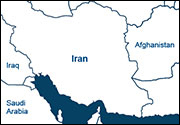
Mainly present in Iran and neighbouring countries
Date formed
Late 1990s
Date listed
2012-12-17
Founder
The Supreme Leader of Iran
Classification
Nationalist/Religious Shia
Description
The Islamic Revolutionary Guard Corps' Qods Force is the clandestine branch of Iran's Islamic Revolutionary Guard Corps (IRGC) responsible for extraterritorial operations, and for exporting the Iranian Revolution through activities such as facilitating terrorist operations.
Objectives
Create a pan-Islamic empire, liberate Palestine and annihilate Israel.
Targets
Israel
Also known as
Pasdaran-e Enghelab-e Islami (Pasdaran), Sepah-e Qods, Qods/Quds, al Quds, al Quds Force, Qods/Quds Force, Qods Corps, Jerusalem Corps, Jerusalem Force and Qods Force
Prominent attacks
The Islamic Revolutionary Guard Corps' Qods Force provides arms, funding and paramilitary training to extremist groups, including the Taliban, Lebanese Hizballah, Hamas, Palestinian Islamic Jihad (PIJ) and the Popular Front for the Liberation of Palestine-General Command (PFLP-GC).
References
- Public Safety Canada - Islamic Revolutionary Guard Corps' Qods Force
- National Consortium for the Study of Terrorism and Response to Terrorism - Islamic Revolutionary Guard Corps' Qods Force
35. Islamic State

Flag of the Islamic State
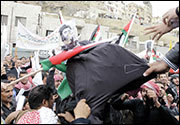
Jordanian protesters tear a dummy representing the leader of the Islamic State (IS) jihadist group, Abu Bakr al-Baghdadi (portrait).

Mainly present in Iraq and Syria
Date formed
Early 1990s, under the name Bayat al Imam
Date listed
2012-08-20
Founder
Abu Musab al-Zarqawi
Classification
Religious
Description
The Islamic State was created in 2006 when Al Qaida in Iraq formed the Mujahideen Consultative Council (majlis Al- Choura) in Iraq. In October 2006, the Council proclaimed the "Islamic State in Iraq" (ISI). In April 2013, ISI became the "Islamic State in Iraq and the Levant" (ISIL) or Islamic State of Iraq and al-Sham (ISIS/Daesh), and finally became the Islamic State (IS) in June 2014. IS is a Sunni group active mainly in Syria and Iraq.
Objectives
Establish a Caliphate, overthrow the governments in Iraq and Syria, and establish an Islamic state based on the Sharia (Islamic law).
Targets
Syria and Iraq military forces, the coalition forces, civilian Muslims (Shias and Sunnis), Christians and other minority religious groups
Also known as
Islamic State in Iraq and the Levant, ISIL, Islamic State of Iraq and Syria, Islamic State of Iraq and al-Sham, ISIS, Al-Dawla Al-Islamiya fi al-Iraq wa al-Sham, Al Qaida in Iraq, al-Qaida in Iraq, Al-Qaeda in Iraq, Al Qaeda in Iraq, AQI, AQI-Zarqawi, al- Tawhid, al-Tawhid and al-Jihad, Kateab al-Tawhid, Brigades of Tawhid, Monotheism and Jihad Group, Al Qaida of the Jihad in the Land of the Two Rivers, Al-Qaida of Jihad in the Land of the Two Rivers, Al-Qaeda in the Land of the Two Rivers, Al-Qaida in the Land of the Two Rivers, Al-Qaida of Jihad Organization in the Land of the Two Rivers, Al-Qaida Group of Jihad in Iraq, Al-Qa'ida of Jihad in Iraq, Al-Qaida Group of Jihad in the Land of the Two Rivers, The Organization of Jihad's Base in the Country of the Two Rivers, The Organization of al-Jihad's Base of Operations in the Land of the Two Rivers, The Organization of al-Jihad's Base of Operations in Iraq, The Organization of al-Jihad's Base in Iraq, The Organization of al-Jihad's Base in the Land of the Two Rivers, The Organization Base of Jihad/ Country of the Two Rivers, The Organization Base of Jihad/ Mesopotamia, Al-Qaida in Mesopotamia, Tanzim Qa'idat Al-Jihad fi Bilad al-Rafidayn, Tanzim al-Qaeda al-Jihad fi Bilad al-Rafidain, Tanzeem Qa'idat al Jihad/Bilad al Raafidaini, Jama'at Al-Tawhid Wa'al- Jihad, JTJ, Islamic State of Iraq, Islamic State in Iraq, ISI, Mujahidin Shura Council, Unity and Holy Struggle, Unity and Holy War, Unity and Jihad Group, al-Zarqawi Network, Daesh, Daech
Prominent attacks
The Islamic State's most prominent attacks have been suicide vehicle-borne improvised explosive devices, improvised explosive devices, armed attacks, hostage takings, beheadings and executions of prisoners by burning or shooting.
- August 19, 2014: The Islamic State released a video entitled "A Message to America" showing the assassination of journalist James Foley.
- September 2, 2014: Release of a video showing the beheading of American journalist Steven Sotloff.
- September 13, 2014: Release on the Internet of a video entitled "Message to the Allies of America" showing the beheading of British aid worker David Cawthorne Haines.
- October 3, 2014: Release of a video showing the beheading of British aid worker Alan Henning.
- November 12, 2015: Double suicide bombing that left close to 200 people injured and 41 dead in a Shiite residential area of Beirut in Lebanon.
- November 13, 2015: Central Paris was the scene of a series of coordinated shootings and suicide attacks. Suicide bombers detonated explosions outside the France stadium, as well as terraces and restaurants in the 10th and 11th districts and the Bataclan concert hall, killing 130 people and injuring 352.
- March 22, 2016: Three suicide-bombings took place at the airport and subway in Brussels, Belgium. These attacks resulted in 32 persons dead and 340 injured. The investigation shows that the individuals who conducted these attacks were related to those involved in the Paris bombings a few months earlier.
References
36. Islamic State – Sinai Province (ISSP)

Logo of Islamic State – Sinai Province (ISSP)

Mainly present in Egypt (mainly in the Sinai area) and the Gaza Strip
Date formed
2011
Date listed
2015-04-07
Founder
Ibrahim Mohamed Farag Abu Eita
Classification
Religious
Description
This group, formerly known as Ansar Bayt al-Maqdis, first appeared during the Egyptian revolution in 2011. The ISSP is a Sunni Salafist Islamist extremist group. Since the removal of Mohamed Morsi from power in 2013, ISSP has been mainly targeting Egyptian institutions. The group carries out its acts of violence against Israel and the Government of Egypt from the Sinai Peninsula of Egypt, where it is based. ISSP carried out many attacks against security forces, killing hundreds of officers.
In November 2014, ISSP pledged allegiance to the Islamic State and became one of its official branches, renaming itself Wilayat al-Sina (Province of Sinai). It is estimated that this group is one of the most directly associated to the Islamic State outside of Iraq and Syria. It is alleged that ISSP receives logistical support from the mother organization, and that leaders of both groups are in contact.
Objectives
The primary objectives of the group are the creation of an Islamic state in Egypt, the destruction of Israel and the implementation of the Sharia on its territory. ISSP shares many of Islamic State's objectives.
Targets
The Government of Egypt, Israel and Western interests in the area, as well as tourist sites, embassies and the media.
Also known as
Ansar Bayt al-Maqdis; Ansar Jerusalem; Islamic State – Sinai State
Prominent attacks
- July 22, 2012: The group detonated bombs on an Egyptian pipeline exporting gas to Jordan and Israel.
- September 5, 2013: A ISSP suicide bomber targeted an armored convoy in Cairo, attempting to assassinate the Interior Minister of Egypt. The Minister survived, but 21 people were killed. One month later, the group assassinated Lieutenant Colonel Mohammed Mabrouk, an Egyptian senior counterterrorism official, in Cairo.
- December 25, 2013: The group attacked an Egyptian police building in Mansoura, Egypt, with a vehicle-borne improvised explosive device (VBIED), killing 19 people.
- February 16, 2014: ISSP bombed a tour bus on the Israel-Egypt border. The explosion killed five people, including four South Koreans.
- October 24, 2014: ISSP attacked soldiers with a car bomb, killing 31.
- October 31, 2015: Explosion of Russian Metrojet flight 9,268, an Airbus A321, in Egypt's Sinai Peninsula, killing 224 people.
References
- Public Safety Canada – Islamic State – Sinai Province
- National Counterterrorism Center - Islamic State – Sinai Province
- Le Monde.fr - Les djihadistes égyptiens d'Ansar Beït Al-Maqdis prêtent allégeance à l'EI
- Stanford University - Islamic State – Sinai Province
37. Jabhat Al-Nusra

Flag of Jabhat Al-Nusra

Jabhat Al-Nusra rebel fighters taking control of Raqqa, Syria

Anti-Syrian President Bashar al-Assad protesters holding the Jabhat Al-Nusra flag.
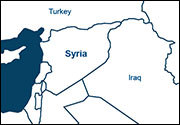
Mainly present in Syria
Date formed
2012-01-23
Date listed
2013-11-07
Founder
Group of Sunni Islamist mujahideen
Classification
Nationalist/Religious
Description
Jabhat Al-Nusra is an Al Qaida affiliated Sunni militant Islamist group in Syria. The group announced its creation during the Syrian Civil War.
Objectives
Overthrow Syrian President Bashar al-Assad's Ba'athist regime and establish an Islamic state in Syria.
Targets
Bashar al-Assad's government and soldiers
Also known as
Jabhet al-Nusra, The Victory Front, Al-Nusrah Front for the People of the Levant, Jabhat Al-Nusra li-Ahl al-Sham min Mujahedi al-Sham fi Sahat al-Jihad (The Support Front for the People of the Levant by the Levantine Mujahedin on the Battlefields of Jihad), the Front for the Defense of the Syrian People and the Front for the Support of the Syrian People
Prominent attacks
Jabhat Al-Nusra has claimed responsibility for nearly 600 attacks – such as ambushes, kidnappings, assassinations, improvised explosive device attacks and suicide bombings – in major city centers including Damascus, Aleppo, Hamah, Dara, Homs, Idlib and Dayr al-Zawr. During these attacks, numerous Syrians civilians have been killed.
References
38. Jaish-e-Mohammed (JeM)

Flag of Jaish-e-Mohammed (JeM)

Maulana Masood Azhar, founder of the Islamic militant group Jaish-e-Mohammed

Mainly present in Pakistan
Date formed
March 2000
Date listed
2002-11-27
Founder
Masood Azhar
Classification
Nationalist/Separatist/Religious
Description
Jaish-e-Mohammed (JeM) is an Islamist extremist group based in Pakistan. It was founded by Masood Azhar upon his release from prison in exchange for the 155 hostages on an Indian Airlines plane hijacked in December 1999.
Objectives
Free Jammu and Kashmir from Indian rule, absorb the areas into Pakistan and establish an Islamic state in the country.
Targets
Indian government and security forces
Also known as
Jaish-i-Mohammed (Mohammad, Muhammad, Muhammed), Jaishe- Mohammad (Muhammed), Jaish-e-Mohammad Mujahideen ETanzeem, Jeish-e-Mahammed, Army of Mohammed, Mohammed's Army, Tehrik Ul-Furqaan, National Movement for the Restoration of Pakistani Sovereignty and Army of the Prophet
Prominent attacks
JeM is committed to using indiscriminate terror tactics to achieve its objectives, including targeting foreigners and political representatives of foreign states.
References
- Public Safety Canada - JeM
- National Counterterrorism Center - Jaish-e-Mohammed
- Federation of American Scientists (FAS) - Intelligence Resource Program - JeM
- National Consortium for the Study of Terrorism and Response to Terrorism - Jaish-e-Mohammed
39. Jaysh Al-Muhajirin Wal-Ansar (JMA)

Logo of Jaysh Al-Muhajirin Wal-Ansar (JMA)

Abu Omar al-Shishani, founder of Jaysh Al-Muhajirin Wal-Ansar

Mainly present in Syria
Date formed
2012
Date listed
2014-10-30
Founder
Abu Omar al-Shishani
Classification
Religious
Description
Jaysh Al-Muhajirin Wal-Ansar (JMA) is a Sunni jihadist militant group formed in early 2012 and operating primarily in the Aleppo area of northern Syria. JMA is essentially composed of Chechen fighters. This entity is close to the Jabhat Al-Nusra, the Al Qaida branch in Syria. Note that this group has not pledged allegiance to the Islamic state, which often leads to fratricidal struggles between the two terrorist groups.
Objectives
Topple Syrian president Bashar al-Assad's government.
Targets
Bashar al-Assad's government and soldiers.
Also known as
Jaish al-Muhajireen wal Ansar, Jaysh al-Muhajireen wa'l-Ansar, Army of Migrants and Supporters, Army of the Emigrants and Helpers, Muhajireen Brigade, Mujahideen Army
Prominent attacks
JMA's tactics include the use of large suicide vehicle-borne improvised explosive devices, ground assaults, hostage taking and kidnapping of foreign nationals and Syrian civilians loyal to Assad.
References
- Public Safety Canada - JMA
- Integrated Criminal Intelligence Unit (ICIU). Jaysh Al-Mouhajirine Wal Ansar, Royal Canadian Mounted Police (November 2014).
40. Jemaah Islamiyyah (JI)

Terror suspect Hilarion del Rosario Santos III from Jemaah Islamiyyah (JI)
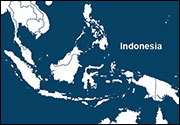
Mainly present in Indonesia
Date formed
1993
Date listed
2003-04-02
Founders
Abdullah Sungkar and Abu Bakar Bashir
Classification
Religious
Description
Jemaah Islamiyyah (JI) has its roots in Darul Islam, a violent radical movement that advocated the establishment of Islamic law (Sharia) in Indonesia. JI subscribes to a Salafist interpretation of Islam and has had cells throughout much of southeast Asia. Although JI began conducting attacks in 1999, the network's existence was discovered in late 2001 after Singaporean authorities disrupted a cell that was planning to attack targets associated with the US Navy.
Objective
Establish a caliphate spanning Indonesia, Malaysia, southern Thailand, Singapore, Brunei and the southern Philippines.
Targets
Anyone it sees as an enemy of Islam, waging jihad against them on a regional and international scale.
Also known as
Jemaa Islamiyah, Jema'a Islamiyya, Jema'a Islamiyyah, Jema'ah Islamiyah, Jema'ah Islamiyyah, Jemaa Islamiya, Jemaa Islamiyya, Jemaah Islamiyya, Jemaa Islamiyyah, Jemaah Islamiah, Jemaah Islamiyah, Jemaah Islamiyyah, Jemaah Islamiya, Jamaah Islamiyah, Jamaa Islamiya, Jemaah Islam, Jemahh Islamiyah, Jama'ah Islamiyah, Al-Jama'ah Al Islamiyyah, Islamic Group and Islamic Community
Prominent attacks
- October 12, 2002: Attacks against two nightclubs in Bali that killed 202 people.
- August 5, 2003: Car bombing of the JW Marriott hotel in Jakarta that killed 12 people.
- September 9, 2004: Bombing of the Australian Embassy in Jakarta that killed 9 people and wounded 150 more.
- July 17, 2009: Separated bombings, minutes apart of the JW Marriott and Ritz-Carlton Hotels in Jakarta, killing 7 and wounding 50.
References
- Public Safety Canada – Jemaah Islamiyyah
- National Counterterrorism Center - Jemaah Islamiyyah
- National Consortium for the Study of Terrorism and Response to Terrorism - Jemaah Islamiyyah
41. Kahane Chai (Kach)

Flag of Kahane Chai (KACH)
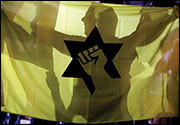
An Israeli right wing activist holds up the flag of the Kahane Chai movement.

Mainly present in Israel
Date formed
December 1990
Date listed
2005-05-24
Founder
Binyamin Kahane, following the assassination of his father, Rabbi Meir Kahane
Classification
Nationalist/Religious/Racist
Description
Kahane Chai (Kach) is a marginal, extremist Jewish entity. Kahane Chai is an offshoot of Kach and was formed following the assassination of Rabbi Meir Kahane. Kach has openly espoused violence against Arabs and the Israeli government as a viable method for establishing a religiously homogenous state.
Objectives
Restore the biblical state of Israel. Kach advocates expelling Arabs from Israel, expanding Israel's boundaries to include the occupied territories and parts of Jordan and the strict implementation of Jewish law (Halakha) in Israel.
Targets
The Israeli government, Arabs and Palestinians
Also known as
Meir's Youth, No'ar Meir Repression of Traitors, State of Yehuda, Sword of David, Dikuy Bogdim, DOV, Judea Police, Kahane Lives, Kfar Tapuah Fund, State of Judea, Judean Legion, Judean Voice, Qomemiyut Movement, Way of the Torah and Yeshiva of the Jewish Idea.
Prominent attacks
Its activities have included threats to government officials and infrastructures, grenade attacks, armed violence and bombings.
- February 25, 1994: During the Cave of the Patriarchs massacre in the city of Hebron, Dr. Baruch Goldstein, a close follower of the Kahane Chai movement, killed 29 Palestinian Muslims and wounded another 125 with a machine gun.
References
- Public Safety Canada - KACH
- Federation of American Scientists (FAS) - Intelligence Resource Program - Kahane Chai
- National Consortium for the Study of Terrorism and Response to Terrorism - Kahane Chai
42. Kurdistan Workers Party (PKK/KADEK)
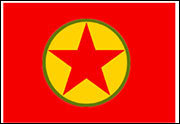
Flag of the Kurdistan Workers Party (PKK/KADEK)
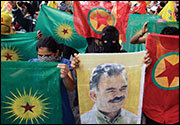
Masked supporters of Kurdish rebel group of the Kurdistan Workers Party.

Mainly present in Kurdistan and Turkey
Date formed
1978
Date listed
2002-12-10
Founder
Abdullah Ocalan
Classification
Communist/Socialist, Nationalist/Separatist
Description
The Kurdistan Workers Party (PKK/KADEK) is a Kurdish political party formed as an offshoot of the Kongra-Gel, a Marxist- Leninist organization composed of separatist Turkish students. The PKK/KADEK has led a campaign of guerrilla warfare and terrorism, especially in Turkey and in northern Iraq. The PKK initiated its first armed attacks in 1984 and went on to kill over 30,000 people. In the early 1990s, in an effort to gain the support of voters, the PKK abandoned its previous strategy of attacking Turkish civilians, focusing instead on the government and tourists. The PKK also plays an active role in the conflict in Syria and Iraq.
Objectives
Establish an independent Kurdish state in southeast Turkey, in northern Iraq (a region that is part of the traditional territory of the Kurdish people) and in certain parts of Iran and Syria.
Targets
The Turkish military and diplomats
Also known as
Kurdistan Workers Party, Partya Karkeren Kurdistan, Kurdistan Labor Party, Kurdistan Freedom and Democracy Congress, KADEK, Kurdistan People's Congress, Kurdistan Halk Kongresi (KHK), People's Congress of Kurdistan, Kongra-Gel
Prominent attacks
Its activities include attacking the Turkish military, diplomats and Turkish businesses at home and in some western European cities.
References
- Public Safety Canada – Kurdistan Workers Party
- Federation of American Scientists (FAS) - Intelligence Resource Program - Kurdistan Workers Party
- National Consortium for the Study of Terrorism and Response to Terrorism - Kurdistan Workers Party
43. Lashkar-e-Jhangvi (LJ)

Flag of Lashkar-e-Jhangvi (LJ)
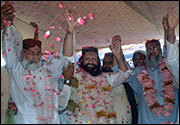
Malik Ishaq, center, a leader of the banned Sunni Muslim group Lashkar-e- Jhangvi and his colleagues.

Mainly present in Pakistan
Date formed
1996
Date listed
2003-06-18
Founder
Riaz Basra
Classification
Nationalist/Separatist
Description
Lashkar-e-Jhangvi (LJ) is a radical Sunni Islamist group in Pakistan that is reportedly linked to Al Qaida. It is reputed as being one of the most violent Islamist extremist organizations in Pakistan. The group was banned from Pakistan by the government in 2001. Many of its members then sought refuge with the Taliban in Afghanistan.
Objectives
Establish an Islamic Sunni state in Pakistan based on Sharia law and have all Shias declared non-believers.
Targets
The Pakistani government and all Shias
Also known as
Jamaat-ud-Dawa (JuD) (Society for Preaching), al-Anfal Trust, Tehrik-e-Hurmate-e-Rasool, al Mansoorian (The Victorious), Army of the Pure, Paasban-e-Kashmir (Kashmir Brigade), Paasban-i-Ahle-Hadith (Ahle-Hadith Brigade), Falah-i-Insaniat Foundation (FIF), Idara Khidmat-e-Khalq, Lashkar-i-Jhangvi, Lashkar-e-Jhangvie, Laskar-e-Jhangvi, Lashkare Jhangvi, Lashkar-e-Jhangwi, Lashkar-i-Jhangwi, Jhangvi Army, Lashkar-e Jhangvi, Lashkar Jhangvi, Lashkar-e-Jhanvi (LeJ), Lashkar-i-Jangvi, Lashkar e Jhangvi, Lashkar Jangvi, Laskar e Jahangvi
Prominent attacks
Responsible for killing hundreds of Shias since its formation in 1996, LJ was behind some of the worst incidents of sectarian violence in Pakistan's history.
- March 2002: Bombing of a bus - 15 people killed, including 11 French technicians.
- March 17, 2002: Bombing during a church service - 5 people killed and 40 people injured.
- 2003: A group of LJ members attacked a Shia mosque in Quetta, killing at least 47 people and wounding many more.
- January 10, 2013: Bombing in Pakistan - 130 killed and 270 injured.
- February 16, 2013: Bombing in Pakistan - 110 killed and 200 injured, mostly Shia people.
References
- Public Safety Canada - Lashkar-e-Jhangvi
- Federation of American Scientists (FAS) - Intelligence Resource Program - Lashkar-e-Jhangvi
- National Consortium for the Study of Terrorism and Response to Terrorism - Lashkar-e-Jhangvi
44. Lashkar-e-Tayyiba (LeT)

Flag of Lashkar-e-Tayyiba (LeT)

Logo of Lashkar-e- Tayyiba (LeT)

Hafiz Mohammad Saeed, founder of Lashkar-e-Tayyiba (LeT)

Mainly present in India
Date formed
1989
Date listed
2003-06-18
Founder
Hafiz Mohammad Saeed
Classification
Nationalist/Separatist/Religious
Description
Lashkar-e-Tayyiba (LeT) (Army of the Pure) is a Pakistanbased, radical organization established in the late 1980s that operates in the Indian states of Kashmir and Jammu. LeT is one of the largest and most active terrorist organizations in South Asia. The group is also allegedly linked to Al Qaida.
Objective
End India's rule of the states of Kashmir and Jammu.
Targets
Civilians and the Indian security forces in the states of Kashmir and Jammu
Also known as
Lashkar-e-Toiba, Lashkar-i-Toiba (LiT), Lashkar-i-Taiba (Holy Regiment), Lashkar-e-Tayyiba (LT) (Army of the Righteous), Lashkare- Taibyya, Lashkar-e-Taiba, Lashkar-e-Tayyiba (Army of the Pure and Righteous), Lashkar-e-Taiba (Righteous Army), Lashkar-Taiba (Army of the Good), Lashkar e Toiba, Lashkar e Taiba, Lashkar-E-Tayyaba, Lashkar e Tayyiba
Prominent attacks
LeT's activities include suicide bombings and armed attacks on civilians, government officials and the Indian security forces.
- November 26, 2008: Terror attack in Mumbai, India, targeting two luxury hotels and a Jewish centre. The event lasted over 60 hours, leaving over 180 people dead and over 300 injured.
References
- Public Safety Canada - Lashkar-e-Tayyiba
- Federation of American Scientists (FAS) - Intelligence Resource Program - Lashkar-e-Tayyiba
- National Consortium for the Study of Terrorism and Response to Terrorism - Lashkar-e-Tayyiba
45. Liberation Tigers of Tamil Eelam (LTTE)

Flag of the Liberation Tigers of Tamil Eelam (LTTE)
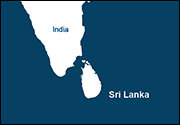
Mainly present in Sri Lanka
Date formed
1976
Date listed
2006-04-08
Founder
Velupillai Prabhakaran
Classification
Nationalist/Separatist
Description
The Liberation Tigers of Tamil Eelam (LTTE), a Sri Lankan based terrorist organization, is the most powerful Tamil organization in Sri Lanka. Over the years, the LTTE has waged a violent secessionist campaign with the help of ground, air and naval forces, as well as a dedicated suicide bomber wing. The LTTE has also had an extensive network of fundraisers, propagandists and arms procurers operating in Sri Lanka and within the Tamil diaspora. It should be noted that the World Tamil Movement (WTM) is the financial arm of the LTTE in Canada. Although the LTTE was militarily defeated in May 2009, subversion, destabilization and fundraising continue, particularly in the diaspora.
Objective
Establish an independent homeland called "Tamil Eelam" for Sri Lanka's ethnic Tamil minority.
Targets
Sri Lankan government and civilian targets
Also known as
The Tamil Tigers, the Eellalan Force, the Ellalan Force, the Tiger Movement, the Sangilian Force, the Air Tigers, the Black Tigers (Karum Puligal), the Sea Tigers, the Tiger Organization Security Intelligence Service (TOSIS) and the Women's Combat Force of Liberation Tigers (WCFLT)
Prominent attacks
LTTE tactics have included full military operations, terror attacks against civilian centres and political assassinations, such as the successful assassinations of Indian Prime Minister Rajiv Ghandi and Sri Lankan President Ranasinghe Premadasa.
The Sri Lankan Civil War, which lasted 27 years, killed between 70,000 and 100,000 people.
References
- Public Safety Canada - Liberation Tigers of Tamil Eelam
- Federation of American Scientists (FAS) - Intelligence Resource Program - Liberation Tigers of Tamil Eelam
- National Consortium for the Study of Terrorism and Response to Terrorism - Liberation Tigers of Tamil Eelam
46. Movement for Oneness and Jihad in West Africa (MOJWA)

Fighters from the Movement for Oneness and Jihad in West Africa (MOJWA)

Mainly present in Mali
Date formed
2011
Date listed
2014-06-02
Founder
Hamada Ould Mohamed Kheirou
Classification
Religious
Description
The Movement for Oneness and Jihad in West Africa is an armed jihadist salafist group and a splinter group of Al Qaida in the Islamic Maghreb.
Objectives
Spread jihad across West Africa and establish a strict form of Sharia law.
Targets
Malian and French military
Also known as
MOJWA, Mouvement pour l'unicité et le jihad en Afrique de l'Ouest, MUJAO, Jamat Tawhid wal Jihad fi Garbi Afriqqiya and Jamaat Tawhid Wal Jihad Fi Garbi Ifriqiya
Prominent attacks
MOJWA has carried out terrorist activities including kidnappings, small arms attacks, improvised explosive devices attacks and suicide bombings.
- March 2012: MOJWA carried out a suicide bombing on a police station in Tamanrasset, Algeria: 23 wounded.
- May 23, 2013: Movement for Oneness and Jihad in West Africa and Al-Muwaqi'un Bil Dima launched twin suicide attacks against a Nigerien army base and a French uranium mine in Niger, killing 25 people.
References
- Public Safety Canada - MOJWA
- National Consortium for the Study of Terrorism and Response to Terrorism - MOJWA
47. Palestine Liberation Front (PLF)

Logo of the Palestine Liberation Front (PLF)

Mainly present in Palestine
Date formed
1959
Date listed
2003-11-13
Founder
Ahmed Jibril
Classification
Leftist
Description
The Palestine Liberation Front (PLF) is a small, armed splinter group allied to the Palestinian Liberation Organization (PLO). The group operates primarily in Europe, Israel, Lebanon and other areas in the Middle East.
Objectives
Destroy the State of Israel and establish an independent Palestinian state with Jerusalem as its capital.
Targets
Israel
Also known as
PLF-Abu Abbas Faction, Front for the Liberation of Palestine (FLP)
Prominent attacks
During its most active period, the PLF is known to have conducted several high-profile attacks, including the October 1985 hijacking of the Italian cruise ship, Achille Lauro.
References
- Public Safety Canada – Palestine Liberation Front
- Federation of American Scientists Intelligence Resource Program - Palestine Liberation Front
- National Consortium for the Study of Terrorism and Response to Terrorism - Palestine Liberation Front
48. Palestinian Islamic Jihad (PIJ)

Logo of the Palestinian Islamic Jihad (PIJ)

Mainly present in Palestine
Date formed
Late 1970s
Date listed
2002-11-27
Founder
Group of radical Palestinian activists living in Egypt
Classification
Nationalist/Religious
Description
The Palestinian Islamic Jihad (PIJ) is one of the most violent Palestinian terrorist groups. The PIJ maintains that armed struggle by the Palestinian people, in tandem with active support from the Arab and Muslim worlds, is the only viable strategy for achieving its objectives. The PIJ was among the first to use suicide bomb attacks against Israel.
Objectives
Destroy Israel and liberate Palestine.
Targets
Civilians and military personnel in Israel as well as Israeli interests
Also known as
Harakat al-Jihad al-Islami fi Filistin, Saraya Al-Quds (The Jerusalem Brigades), Al-Quds Brigades, Islamic Jihad, Palestine Islamic Jihad-Shaqaqi Faction, Palestinian Islamic Jihad-Shaqaqi, PIJ-Shaqaqi Faction, PIJ-Shallah Faction, Islamic Jihad of Palestine, Islamic Jihad in Palestine, Abu Ghunaym Squad of the Hizballah Bayt Al-Maqdis, Al-Quds Squads, Al-Awdah Brigades, Islamic Jihad Palestine (IJP), Islamic Jihad – Palestine Faction and Islamic Holy War
Prominent attacks
The PIJ was very active in Lebanon in the 1980s. In April 1983, it claimed responsibility for an attack against the US embassy in Lebanon, leaving 69 victims. In October of the same year, the PIJ killed over 300 people in US and French quarters in Beirut.
- 1995: In what was reported as one of the deadliest terrorist incidents in Israeli history, two PIJ suicide bombers executed a coordinated attack at a bus stop in Beit Lid, where 19 were killed and 61 wounded. Over the course of the past decade, most PIJ attacks have taken the form of suicide bombings or rocket firings into Israel.
- August 2003: A bomb killed 21 people and injured more than 100 people on a bus in Jerusalem.
- October 2003: A bomb killed 22 and injured 60 in a restaurant in Jerusalem.
- October 2005: A bomb detonated in a market, killing five people.
- April 2006: A bomb in Tel Aviv killed seven.
- In 2015, the group continued its terrorist activity such as suicide bombings. The PIJ tried to provoke a third Intifada in Israel.
References
- Public Safety Canada - Palestinian Islamic Jihad
- Federation of American Scientists (FAS) - Intelligence Resource Program - Palestinian Islamic Jihad
- National Consortium for the Study of Terrorism and Response to Terrorism - Palestinian Islamic Jihad
49. Popular Front for the Liberation of Palestine (PFLP)

Logo of the Popular Front for the Liberation of Palestine (PFLP)
 Children carrying guns during a Popular Front for the Liberation of Palestine celebration.
Children carrying guns during a Popular Front for the Liberation of Palestine celebration.

Mainly present in Palestine
Date formed
1967
Date listed
2003-11-13
Founder
George Habash
Classification
Communist/Socialist, Nationalist
Description
The Popular Front for the Liberation of Palestine (PFLP) is a Marxist-Leninist group based in Palestine.
Objectives
Destroy the State of Israel and establish a communist government in Palestine.
Targets
Israeli Government and capitalism in general
Also known as
Halhul Gang, Halhul Squad, Palestinian Popular Resistance Forces, PPRF, Red Eagle Gang, Red Eagle Group, Red Eagles, Abu Ali Mustafa Brigades, Al-Jibha al-Sha'biya lil-Tahrir Filistin
Prominent attacks
During the 1970s, the group took part in some of the boldest terrorist attacks of the period, such as hijacking three civilian airliners in one day and storming the Vienna headquarters of the Organization of Petroleum Exporting Countries (OPEC).
Since 2000, the PFLP has turned increasingly to the use of suicide bombers, guerrilla warfare tactics, car bombings and mortar strikes. The PFLP was also responsible for the first assassination of a cabinet minister in Israel's history, killing Tourism Minister Rehavam Zeevi in 2001.
References
- Public Safety Canada – PFLP
- Federation of American Scientists Intelligence Resource Program - PFLP
- National Consortium for the Study of Terrorism and Response to Terrorism - PFLP
50. Popular Front for the Liberation of Palestine - General Command (PFLP-GC)

Logo of the Popular Front for the Liberation of Palestine – General Command (PFLP-GC)

Palestinian armed militants of the pro Syrian Popular Front for the Liberation of Palestine - General Command (PFLP-GC)

Mainly present in Syria
Date formed
April 1968
Date listed
2003-11-13
Founder
Ahmed Jabril
Classification
Nationalist
Description
The Popular Front for the Liberation of Palestine - General Command (PFLP-GC) is an Islamist Communist group based in Syria. It is a splinter faction of the Popular Front for the Liberation of Palestine. The group is opposed to any negotiation with Israel and believes solely in a military solution to the Israeli-Palestinian conflict. It was the first Palestinian group to use suicide squads. Their operational similarities to Hamas have led the two organizations to coordinate their positions and cooperate.
Objectives
Establish a Palestinian state and destroy Israel.
Targets
Israeli military and civilians
Also known as
Al-Jibha Sha'biya lil-Tahrir Filistin-al-Qadiya al-Am
Prominent attacks
The PFLP-GC has used barometric bombs to blow up aircraft, parcel explosives sent through the mail as well as motorized hang-gliders in a guerrilla warfare raid into Israel. During the 1990s, the PFLP-GC limited its activities to training and equipping other terrorist groups, such as Hamas and the Palestinian Islamic Jihad.
- February 21, 1970: Bombing of Swissair Flight 330 to Tel Aviv: 38 passengers and 9 crew members killed..
- May 22, 1970: Bombing of an Israeli school bus: 12 killed, including 9 children and 25 injured.
References
- Public Safety Canada - PFLP-GC
- Federation of American Scientists (FAS) - Intelligence Resource Program - PFLP-GC
- National Consortium for the Study of Terrorism and Response to Terrorism - PFLP-GC
51. Sendero Luminoso (SL)

Flag of Sendero Luminoso (SL)

Mainly present in Peru
Date formed
Late 1960s
Date listed
2003-02-12
Founder
Abimael Guzman, alias Comrade Gonzalo
Classification
Communist/Socialist
Description
Sendero Luminoso (SL) is a splinter group of the Communist Party of Peru. SL's area of operations is limited to Peru, with most of its activities in rural areas, but some of its attacks have taken place in the capital, Lima.
Objectives
Destroy existing Peruvian institutions and replace them with a communist peasant revolutionary regime which would eliminate foreign influence from the country.
Targets
Peruvian security forces, counter-narcotics personnel, civilians and politicians
Also known as
Shining Path, Partido Comunista del Peru en el Sendero Luminoso de Jose Carlos Mariategui, Communist Party of Peru on the Shining Path of Jose Carlos Mariategui, Partido Comunista del Peru, Communist Party of Peru, The Communist Party of Peru by the Shining Path of Jose Carlos Mariategui and Marxism, Leninism, Maoism and the Thoughts of Chairman Gonzalo, Revolutionary Student Front for the Shining Path of Mariategui, Communist Party of Peru - By Way of the Shining Path of Mariategui, PCP - por el Sendero Luminoso de Mariategui, PCP and PCP-SL
Prominent attacks
Its tactics include indiscriminate bombing campaigns, political assassinations, as well as armed attacks against civilians and foreign interests in Peru and drug trafficking.
References
- Public Safety Canada - Sendero Luminoso
- Federation of American Scientists (FAS) - Intelligence Resource Program - Sendero Luminoso
- National Consortium for the Study of Terrorism and Response to Terrorism - Sendero Luminoso
52. Taliban

Taliban flag

Pakistani Taliban patrol in their stronghold of Shawal in Pakistani tribal region.

Mainly present in Afghanistan
Date formed
1994
Date listed
2013-05-09
Founder
Group of Islamist Pakistani students
Classification
Religious
Description
The Taliban is an Islamic fundamentalist political movement in Afghanistan that was formed in the province of Kandahar. The Taliban ruled Afghanistan under strict Islamic rule (sharia) for five years, between 1996 and 2001. Today, the Taliban has been ousted from power but has resurfaced as a non-state terrorist entity within Afghanistan. The Taliban collaborated with Usama Bin Laden (Al Qaida), allowing him to establish training camps for legions of future terrorists.
Objectives
Establish in Afghanistan the purest Islamic state in the world. Remove all foreign forces from Afghanistan and restore the Islamic Emirate of Afghanistan through the overthrow of the current government.
Targets
Civilian targets, government compounds, International Security Assistance Force (ISAF)/Afghan bases, military targets in built-up urban areas, as well as infrastructure projects
Also known as
Afghan Taliban, Tahreek-i-Islami-i-Taliban Afghanistan, Movement of Islamic Students, The Taleban, the Islamic Movement of the Taliban (De Talebano Islami Ghurdzang or Tehrik) and the Islamic Emirate of Afghanistan (De Afghanistan Islami Emarat)
Prominent attacks
The Taliban uses terrorist tactics, including the extensive use of improvised explosive devices (IEDs) and suicide attacks, to further its political objectives. In 2011, the Taliban was responsible for the majority of civilian casualties in Afghanistan and has been known to carry out a number of attacks on girls' schools in particular.
According to the United Nations, the Taliban was responsible for 76% of civilian casualties in Afghanistan in 2009, 75% in 2010 and 80% in 2011.
References
- Public Safety Canada - Taliban
- National Consortium for the Study of Terrorism and Response to Terrorism - Taliban
- Federation of American Scientists (FAS) - Intelligence Resource Program - Taliban
- National Counterterrorism Center - Taliban
53. Tehrik-e-Taliban Pakistan (TTP)

Flag of the Tehrik-e-Taliban Pakistan (TTP)

Mainly present in Pakistan
Date formed
2007
Date listed
2011-07-05
Founder
Coalition of militant groups against the Pakistani army
Classification
Religious
Description
The Tehrik-e-Taliban Pakistan (TTP) was founded in December 2007 as an umbrella organization for pro-Taliban groups operating mostly in the Federally Administered Tribal Areas (FATA) and Khyber Pakhtunkhwa (formerly North West Frontier Province), Pakistan. The TTP maintains close links to Al Qaida, Lashkar-e-Jhangvi (LJ) and Jaish-e-Mohammed (JeM).
Objectives
Create a Taliban-style Islamic emirate under Sharia law, beginning in Pakistan's tribal areas and later extending to include Muslims elsewhere, unite pro-Taliban groups in FATA and Khyber Pakhtunkhwa and assist the Afghan Taliban in their campaign against President Karzai.
Targets
The Afghan administration, US/NATO forces, Pakistani state, military and police facilities
Also known as
Tehrik-e-Taliban Pakistan, Tehrik-I-Taliban Pakistan, Tehrik-e- Taliban, Pakistani Taliban, Tehreek-e-Taliban, Tehrik Taliban-IPakistan, Tehrik-i-Taliban Pakistan, Tehreek-e-Taliban Pakistan
Prominent attacks
The TTP has conducted numerous armed, bomb and suicide attacks to achieve its objectives. The TTP has also engaged in criminal activities, such as extortion, theft, robbery and kidnapping for ransom to support its terrorist operations.
- May 1, 2010: Car bombing attempt in New York City's Times Square.
- October 9, 2012: Planned school-bus shooting of Malala Yousafzai, a young activist for women's rights to education in Pakistan, who miraculously survived three bullets, including one to her head. This failed assassination attempt made the headlines worldwide. Malala was the 16th woman to receive the prestigious Nobel Peace Prize in 2014.
- June 8, 2014: Ten terrorists from both the TTP and the Islamic Movement of Uzbekistan attacked the Karachi International Airport with small arms and suicide vests, killing 26 people.
- December 16, 2014: The Army Public School in Peshawar was stormed by seven gunmen from the TTP: 145 people were killed.
References
- National Counterterrorism Center - Tehrik-e-Taliban Pakistan
- Public Safety Canada - Tehrik-e-Taliban Pakistan
54. World Tamil Movement (WTM)

Logo of the Liberation Tigers of Tamil Eelam (LTTE)

Flags of the Liberation Tigers of Tamil Eelam fly above about one-thousand Canadian Tamils demonstrating on Parliament Hill.

Present in Canada and elsewhere
Date formed
1986
Date listed
2008-06-13
Founder
Unknown
Classification
Nationalist/Separatist
Description
The World Tamil Movement (WTM) became a known and leading front organization for the Liberation Tigers of Tamil Eelam (LTTE) in Canada. The various offices of the WTM in Canada transfer funds to bank accounts in Sri Lanka meant for the LTTE. The leadership of the WTM acts at the direction of the LTTE and has been instrumental in fundraising in Canada on behalf of the LTTE. WTM representatives canvas areas in Canada with large Tamil populations demanding donations and have been involved in acts of intimidation and extortion to secure funds.
Objectives
Provide financial support to the LTTE organization in its activities to establish an independent nation, the "Tamil Eelam", for the Tamil minority in Sri Lanka.
Targets
Tamil populations in Canada to extort money from them.
Also known as
N/A
Prominent attacks
Funding of the terrorist group Liberation Tigers of Tamil Eelam (LTTE) and use of threats and intimidation against members of Tamil communities in Canada who refuse to contribute.
References
- Public Safety Canada – World Tamil Movement
- MarketWired.com - The Government of Canada lists the World Tamil Movement as a Terrorist Organization
Assistance / reporting
This section provides the contact information of local agencies (government and non-government) that can assist you in getting support for yourself or a close one presenting some risk factors for radicalization to violence, or in reporting information on a threat to national security or behaviors associated with radicalization to violence.

Throughout my career, I noted that the paths to radicalization leading to violence varied from one person to the next; there are as many paths as there are ways to avoid radicalization and pull through. Early reporting is the beginning of the solution.
Everyone has a role to play
The threat of radicalization to violence requires everyone to play a role in order to prevent violent behaviour from occurring. Violent extremism cannot be stopped by law enforcement alone.
Every Canadian has to be aware of the possibility that someone they know may be at risk of becoming radicalized to violence.
You (relatives, friends, teachers, colleagues, social workers, religious and community leaders) are the closest to the individuals at risk of becoming radicalized to violence. This means you are the ones in the best position to recognize early warning signs in behavioural changes. You are also the ones who can contact the appropriate agencies and/or authorities to get assistance and find out what to do.
Resources and reporting by canadian province
To report a situation of concern or to request information, please refer to the telephone numbers listed below.
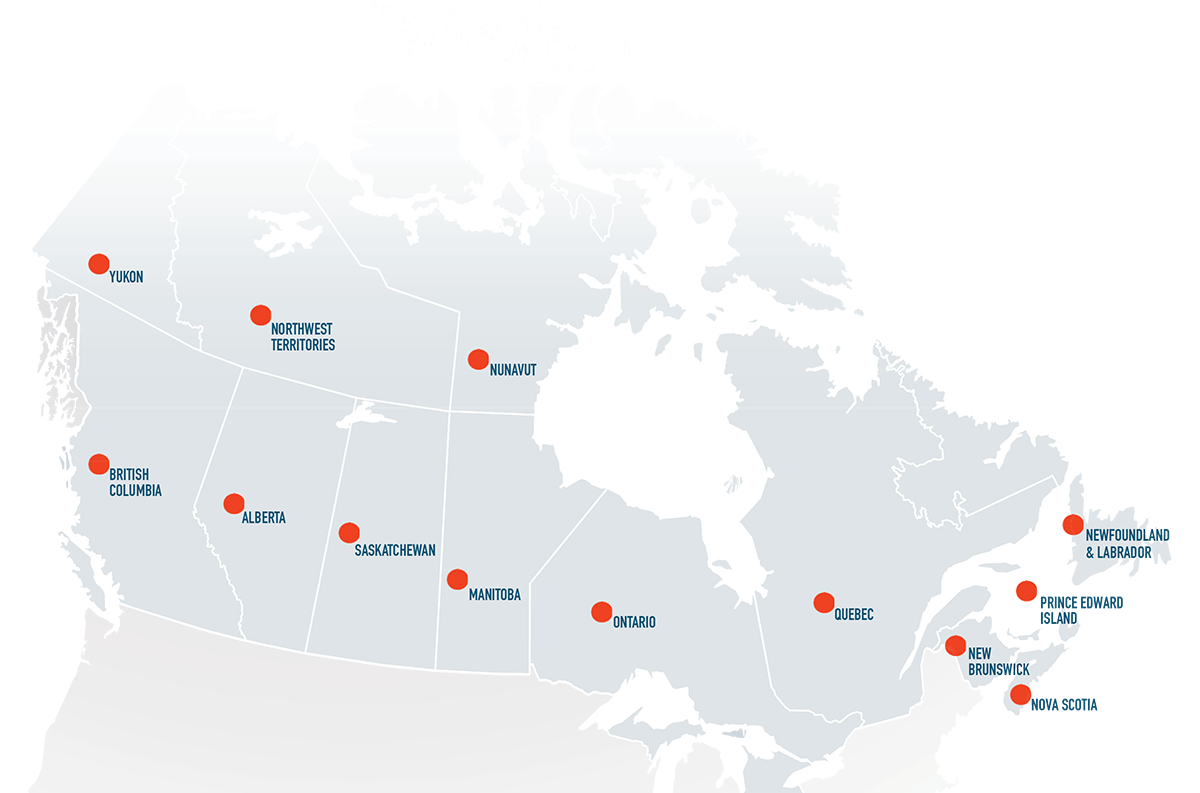
Across Canada
- Emergency: 911
- RCMP - National Security Information Network: 1-800-420-5805
- Crime Stoppers: 1-800-222-8477 or text: TIP312 www.222tips.com
- Government and community-based health and social services (some regions): 211
- EXIT CANADA (Disengagement from Violence Centre): 1-612-888-3948 Exitcanada.org
- Contact the RCMP online
Alberta
| Resources | Phone numbers | Internet sites |
|---|---|---|
| RCMP - Integrated National Security Enforcement Team - Edmonton | 780-890-4365 | rcmp.ca |
| RCMP – Integrated National Security Enforcement Team - Calgary | 403-292-8705 | rcmp.ca |
| Crime Stoppers | 1-800-222-8477 or text: TIP312 | www.222tips.com |
| Alberta Child and Family Services Line | 1-800-387-5437 | |
| Alberta Health Services | 403-297-4664 | Alberta Health Services |
| Alberta Crisis Line | 1-800-565-3801 | |
| Social Services (for parent or youth) | 211 |
British Columbia
| Resources | Phone numbers | Internet sites |
|---|---|---|
| RCMP | 778-290-3100 | rcmp.ca |
| RCMP - Integrated National Security Enforcement Team | 778-290-4195 or 778-290-6000 | |
| Crime Stoppers | 1-800-222-8477 or text: BCTIP 274637 | www.solvecrime.ca |
| Vancouver Police Department - Phone General Enquiries | 311 | |
| B.C. Police Forces | B.C. Police Forces |
Manitoba
| Resources | Phone numbers | Internet sites |
|---|---|---|
| RCMP | 204-983-5462 | rcmp.ca |
| Crime Stoppers | 1-800-222-8477 or text: TIP312 | www.222tips.com |
| Winnipeg Police Service | 204-986-6222 (non-emergency line) |
New Brunswick
| Resources | Phone numbers | Internet site |
|---|---|---|
| RCMP | 1-800-665-6663 | rcmp.ca |
| Crime Stoppers | 1-800-222-8477 or text: TIP312 | www.222tips.com |
Newfoundland and Labrador
| Resources | Phone numbers | Internet sites |
|---|---|---|
| RCMP | 709-772-5400 | rcmp.ca |
| Royal Newfoundland Constabulary | 709-729-8000 | |
| Mental Health Crisis Line of Newfoundland and Labrador | 888-737-4668 | Mental Health Crisis Line of Newfoundland and Labrador |
| Crime Stoppers | 1-800-222-8477 or text: TIP312 | www.222tips.com |
Northwest Territories
| Resource | Phone numbers | Internet site |
|---|---|---|
| RCMP | 1-800-794-9460 or 1-800-420-5805 | rcmp.ca |
Nova Scotia
| Resources | Phone numbers | Internet sites |
|---|---|---|
| RCMP | 902-720-5694 | rcmp.ca |
| Nova Scotia Terrorism Tipline | 1-800-420-5805 | |
| Crime Prevention Unit | 902-424-3149 | Nova Scotia Department of Justice |
| Crime Stoppers | 1-800-222-8477 or text: TIP312 | www.222tips.com |
| Network of Community and Social Services | 211 | 211 Nova Scotia |
Nunavut
| Resource | Phone number | Internet site |
|---|---|---|
| RCMP - Iqaluit | 867-975-0123 | rcmp.ca |
Ontario
| Resources | Phone numbers | Internet sites |
|---|---|---|
| RCMP - Integrated National Security Enforcement Team | 1-800-387-0020 | rcmp.ca |
| OPP - Ontario Provincial Police | 1-888-310-1122 | Ontario Provincial Police |
| Crime Stoppers | 1-800-222-8477 or text: TIP312 | www.222tips.com |
| Toronto Police Service - Crime Prevention | 416-808-0135 | Toronto Police Service - Crime Prevention Directory |
| Peel Regional Police | 905-453-3311 (non-emergency line) | Peel Regional Police |
| Ottawa Police service | 613-236-1222 | Ottawa Police service - Contact us |
| Distress Centre - Ontario | 613-238-3311 | Distress Centre - Ottawa and Region |
| Sayeda Khadija Centre (Dr. Hamid Slimi) | 905-564-5509 | Sayeda Khadija Centre |
| Canadian Centre For Deen Studies | 647-258-9436 |
Prince Edward Island
| Resources | Phone numbers | Internet sites |
|---|---|---|
| RCMP | 902-566-7112 | rcmp.ca |
| Crime Stoppers | 1-800-222-8477 or text: TIP312 | www.222tips.com |
| Victim Services (Government of PEI) | 902-368-4582 | |
| The PEI Helpline | 1-800-218-2285 | |
| Family Services of PEI | 902-436-9171 |
Quebec
| Resources | Phone numbers | Internet sites |
|---|---|---|
| Radicalization to Violence Prevention Centre | 514-687-7141 or 1-877-687-7141 | Radicalization to Violence Prevention Centre |
| RCMP | 1-800-771-5401 | rcmp.ca |
| Sûreté du Québec Crime Information Centre | 1-800-659-4264 | |
| Info-Crime | 1-800-711-1800 | |
| Info-Crime - Montréal | 514-393-1133 or 514-280-2222 | Montréal Police Service - Contact us |
| Kids Help Phone | 1-800-668-6868 | Kids Help Phone |
| Québec City AGIR Program | 418-641-2447 or 1-888-641-2447 | Québec City |
| Première ressource - Parent Assistance | 514-525-2573 or 1-866-329-4223 | Première ressource - Aide aux parents |
Saskatchewan
| Resources | Phone numbers | Internet sites |
|---|---|---|
| RCMP | 1-800-667-6662 | RCMP in Saskatchewan |
| Crime Stoppers | 1-800-222-8477 or text: TIP312 | www.222tips.com |
| Regina Police Service | 306-777-6500 | Regina Police Service |
| Saskatoon Police Service | 306-975-8300 | Saskatoon Police Service |
| Community Hub Contact (Regina) | 306-780-5143 or 306-201-9790 |
Yukon
| Resources | Phone numbers | Internet sites |
|---|---|---|
| RCMP | 1-800-420-5805 | rcmp.ca |
| RCMP - Whitehorse | 867-667-5555 | rcmp.ca |
Glossary
- Anti-terrorism
- Caliphate
- Cells
- Direct Action
- Fatah
- Fatwa
- Guerrilla Warfare
- Integrated National Security Enforcement Team (INSET)
- Intifada
- Invisible Web
- Islam
- Islamic State
- Islamism
- Jihad
- Kaffir/Kuffar
- Koran
- Listed Entity
- Lone Actor
- Mujahideen
- Muslim
- Sabotage
- Salafi
- Salafism
- Shahada
- Sharia
- Sheikh
- Shia
- Sunni
- Wilaya
- Anti-terrorism
Defensive measures used to reduce the vulnerability of individuals and property to terrorist acts.
Source: RCMP- Caliphate
The office or jurisdiction of a caliph, the chief Muslim civil and religious ruler.
Source: RCMP and Merriam-Webster
- Cells
Smallest units within a guerrilla warfare or terrorist group. A cell generally consists of two or more people dedicated to a terrorist cause. The formation of cells is born of the concept that an apparent «leaderless resistance» makes it hard for counter-terrorists authorities to penetrate.
Source: RCMP- Direct Action
Activity by individuals, groups or governments to achieve political goals outside of normal social/political channels, targeting people, groups or property. Nonviolent Direct Action can include strikes, workplace occupations, sit-ins and graffiti. Violent Direct Action includes sabotage, vandalism, assault and murder. The name "Direct Action" was also used by the Squamish Five to identify themselves in communiqués.
Source: RCMP- Fatah
A Palestinian political and military organization founded in 1958 by Yasser Arafat and others to bring about the establishment of a Palestinian state. It is the main component of the Palestine Liberation Organization (PLO).
Source: Oxford Dictionaries
- Fatwa
A legal opinion or decree handed down by an Islamic religious leader.
Source: Merriam-Webster
- Guerrilla warfare
Guerrilla is a spanish word for "Little War". Term invented to describe tactics Spain used to resist Napoleon, though the tactics themselves have been around much longer. Guerrilla warfare is cell-based with no front line. It is the oldest form of asymmetric warfare, based on sabotage and ambush. Its objective is to destabilize government through lengthy and low-intensity confrontation.
Source: RCMP- Integrated National Security Enforcement Team (INSET)
-
Strategically based in locations across the country, these teams collect, share and analyze intelligence on investigations that concern threats to national security and criminal extremism/terrorism. Duties include intelligence and counter-terrorism in concert with the rest of the RCMP, domestic and foreign agencies, diplomatic and parliamentary communities and the public. INSETs are made up of representatives of the RCMP, federal partners and agencies such as the Canada Border Services Agency (CBSA), Citizenship & Immigration Canada (CIC), the Canadian Security Intelligence Service (CSIS) and provincial and municipal police services.
Source: RCMP - Intifada
Arabic for "Shaking Off". In 1987, following the killing of several Arabs in the Gaza Strip, the first intifada began and went on until 1993. The second intifada began in September 2000, following Ariel Sharon's visit to the Temple Mount. Both intifadas began as civil disobedience by Palestinians which escalated into the use of terror.
Source: RCMP- Invisible Web
The part of the World Wide Web not accessible through conventional search engines. (Deep Web, Dark Web, Hidden Web, Dark Net, Invisible Internet).
Source: The Free Dictionnary
- Islam
Arabic for "submission to the will of God". Islam is one of the three monotheistic religions, along with Judaism and Christianity, for which it claims the religious heritages. Founded in the 7th century of our era by the prophet Mohammed (Muhammad in Arabic), Islam is based on the divine revelation recorded in the Koran, the holy book of Islam. Strict monotheism is the fundamental tenet of Islam.
Islam was initiated in Arabia and spread throughout the Middle East. The influence of this religion of over one billion people has now expanded worldwide. The Muslim community split into several branches (Sunni, Shi'ia, Khariji) after the death of its Prophet. However, since its creation, Islam as a whole has upheld its way of life, moral code, culture and perceptions of the State and judicial system.
Source: Dictionnaire Larousse
- Islamic state
Islamic state or Islamic government refers to a legal concept where the state (people, territory, government) has a constitution and a political regime and where Islam is the state religion. In an Islamic state, the political regime and the affairs of the state are based on the Sharia (Islamic law).
Source: RCMP
- Islamism
A political ideology whose key tenets include:
- Belief that Islam is not a religion, but a holistic socio-political system;
- Advocacy of Sharia (Islamic law) as divine state law;
- Belief that a transnational Muslim community (the Ummah) should unite as a political bloc; and
- Advocacy of an 'Islamic' state, or Caliphate, within which sovereignty belongs to God.
Adherents are known as Islamists. The spectrum of Islamism ranges from entry-level Islamists (e.g. the Muslim Brotherhood) and revolutionary Islamists (e.g. Hizb ut-Tahrir) to militant Islamists, or jihadists (e.g. Al-Qaeda), who are prepared to use violence to achieve their aims. While differing in methodology, all Islamists share the same core ideology.
Source: RCMP- Jihad
Arabic for "Struggle." Interpretations range from a personal effort to live according to Islam to defending Islam by means of an armed struggle in the name of Allah to establish Islam.
Source: RCMP- Kaffir/Kuffar
Arabic for "Rejecter" or "Ungrateful". In the Islamic doctrinal sense, refers to a person who does not recognize God (Allah) or the prophethood of Mohammed (i.e., any non-Muslim), or hides, denies or covers the "truth".
Source: RCMP- Koran
The holy book of Islam, considered by Muslims to contain the revelations of God to Mohammed.
Source: RCMP- Listed Entity
The listing of an entity is a very public means by the Government of Canada to identify a group or individual as being associated with terrorism. An entity can be a person, group, trust, partnership or fund, or an unincorporated association or organization. Being listed is not a crime.
Source: RCMP- Lone Actor
Person who commits violent and/or non-violent acts in support of a group, movement or ideology, but does so alone, outside of a command structure. (Lone wolf)
Source: RCMP- Mujahideen
Arabic for "Fighters". Usually refers to groups of fighters in the name of Islam. Mujahideen have been involved in conflicts in Chechnya, Kosovo and throughout the Middle East.
Source: RCMP- Muslim
Follower of Islam. Two primary denominations exist − Sunni and Shia − plus several minor denominations. Sunni and Shia are essentially similar in belief, but have significant theological and legal differences. Muslims can be of any ethnic origin, including Arab, African, Chinese, European, Indonesian, Asian, etc.
Source: RCMP- Sabotage
Deliberate action aimed at weakening an entity through subversion, obstruction disruption, or destruction.
Source: RCMP- Salafi
Adherent of Salafism.
Source: Dictionnaire Larousse
- Salafism
Derived from the Arabic word Salaf, meaning Ancestors. Salafism is a fundamentalist current of Islam. Its followers advocate strict adherence to Sharia, or strict application of the texts of the Koran and the Sunna (the way and actions of Prophet Mohammed), and a return to the original religious practices of the companions of the Prophet.
Source: The Free Dictionnary
- Shahada
The central statement of faith in Islam consisting of an affirmation of the uniqueness of God and of Mohammed as God's prophet.
Source: The Free Dictionnary
- Sharia
Body of Islamic religious law based on the Koran.
Source: RCMP- Sheikh
Arabic for "Elder". Word or honorific title commonly used to designate tribal elder, lord, revered wise man or Islamic scholar.
Source: RCMP- Shia
Second-largest denomination of Islam, representing about 15 percent of Muslims worldwide. The Shia-Sunni divided following the death of the Prophet Mohammed. Shi'ites claim authority of the Prophet's descendants and that leadership should pass down only through Mohammed's descendants.
Source: RCMP- Sunni
Largest denomination of Islam with about 85% of the world's 1.5 billion Muslims. Unlike Shi'ites, Sunnis believe that God did not specify any particular leaders to succeed Mohammed and leadership is to be elected.
Source: RCMP- Wilaya
Wilaya (Arab term) is an ancient land division system referring to administrative regions or divisions. This concept exists in a number of African and Asian countries. The wali (sort of governor) is designated by the country's central authority to govern the wilaya. This concept is used by the Islamic State terrorist group to create wilayates in certain parts of the world. These wilayates swear allegiance to and depend on the caliphate. (Examples: wilaya of Khurâsân (between Afghanistan and Pakistan), wilaya of Sinâ (Egypt)).
Source: RCMP
- Date modified:

 Whether it is to participate in humanitarian aid or to visit family members, travelling to a conflict area is dangerous. Making an informed decision is paramount. The Government of Canada advises Canadians against all travel in these areas. Outbreaks of violence can occur with little or no notice and travellers risk being at the wrong place at the wrong time.
Whether it is to participate in humanitarian aid or to visit family members, travelling to a conflict area is dangerous. Making an informed decision is paramount. The Government of Canada advises Canadians against all travel in these areas. Outbreaks of violence can occur with little or no notice and travellers risk being at the wrong place at the wrong time. The planning of any act of terrorism exposes indicators that can become apparent in the days, weeks or months prior to an attack. The discovery of one or more indicators, when considered in a broader context, could help prevent an attack or threat.
The planning of any act of terrorism exposes indicators that can become apparent in the days, weeks or months prior to an attack. The discovery of one or more indicators, when considered in a broader context, could help prevent an attack or threat.
